Glacier National Park: Everything You Need to Know for Your Adventure
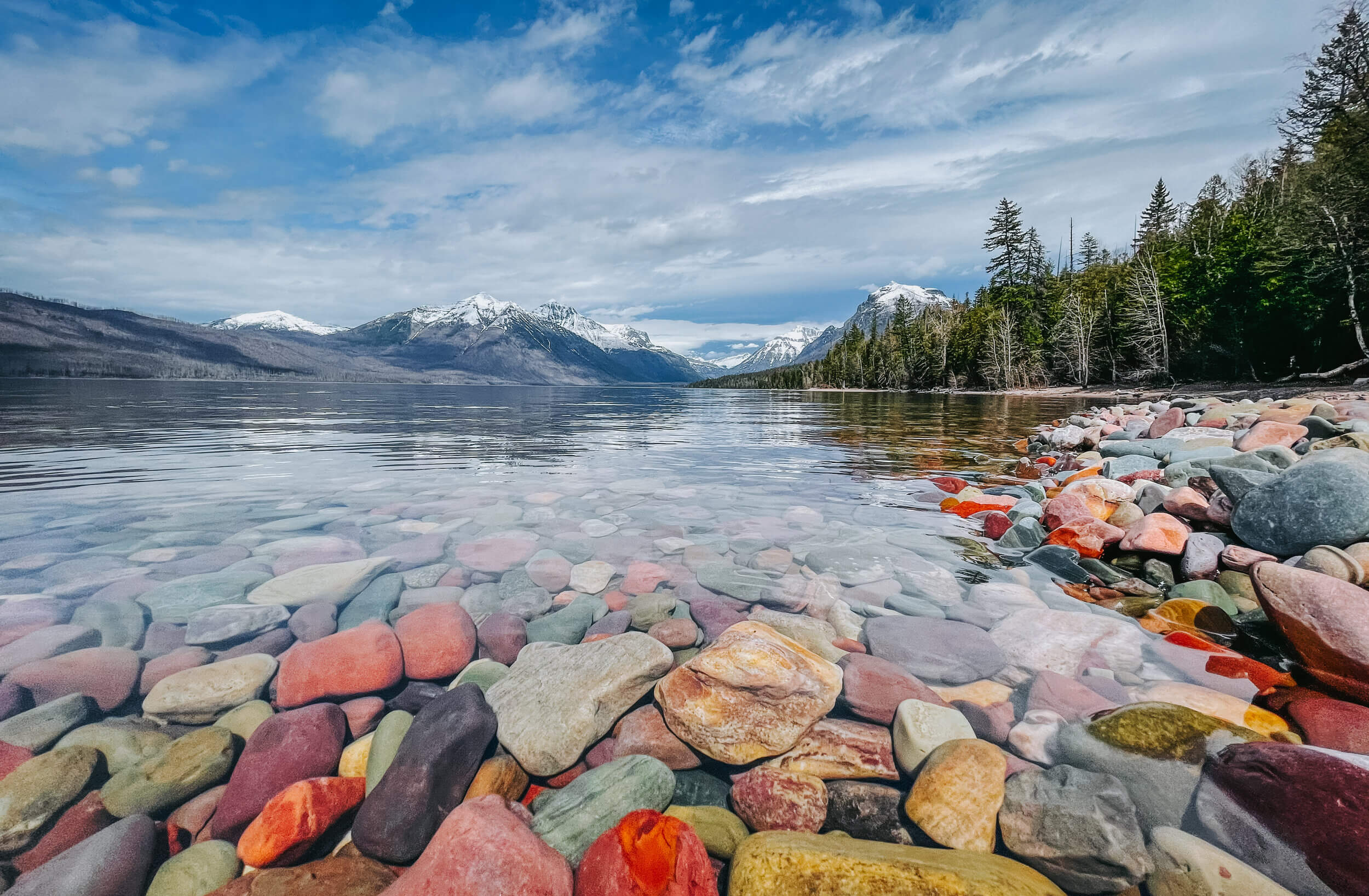
As one of the top parks in the country, countless visitors flock to Glacier National Park in Montana each year! The park is nestled in northwestern Montana and the Canadian border, adjacent to Alberta and British Columbia, and is surrounded by rugged mountains, lush forests, alpine meadows, and stunning lakes. There are over 700 miles of hiking trails throughout the park, making this park a paradise for those seeking the wilderness. You can also lodge right in the park at the historic lodges along the Going-to-the-Sun Road! Whichever activities you choose to explore while in the park, it is certain that you will have an excellent time surrounded by the most spectacular scenery!
For the past few years, I have been planning an annual National Park trip with my father and Glacier National Park has been on the list for years! While planning our trip, Grand Teton National Park (in Wyoming) and Yellowstone National Park (in Idaho, Wyoming, and Montana) were nearby and it made sense to explore those parks along with Glacier National Park! 9 days. 3 States. 3 National Parks. It was certainly a trip to remember! We started and ended our trip from the Bozeman Yellowstone International Airport (BZN), roughly a 4-hour drive to our first stop in Jackson, Wyoming, and 4 hours 42 minutes from our ending destination of Kalispell, Montana. You can read more in depth about my time in the respective posts: Glacier National Park and A Guide to Yellowstone National Park.
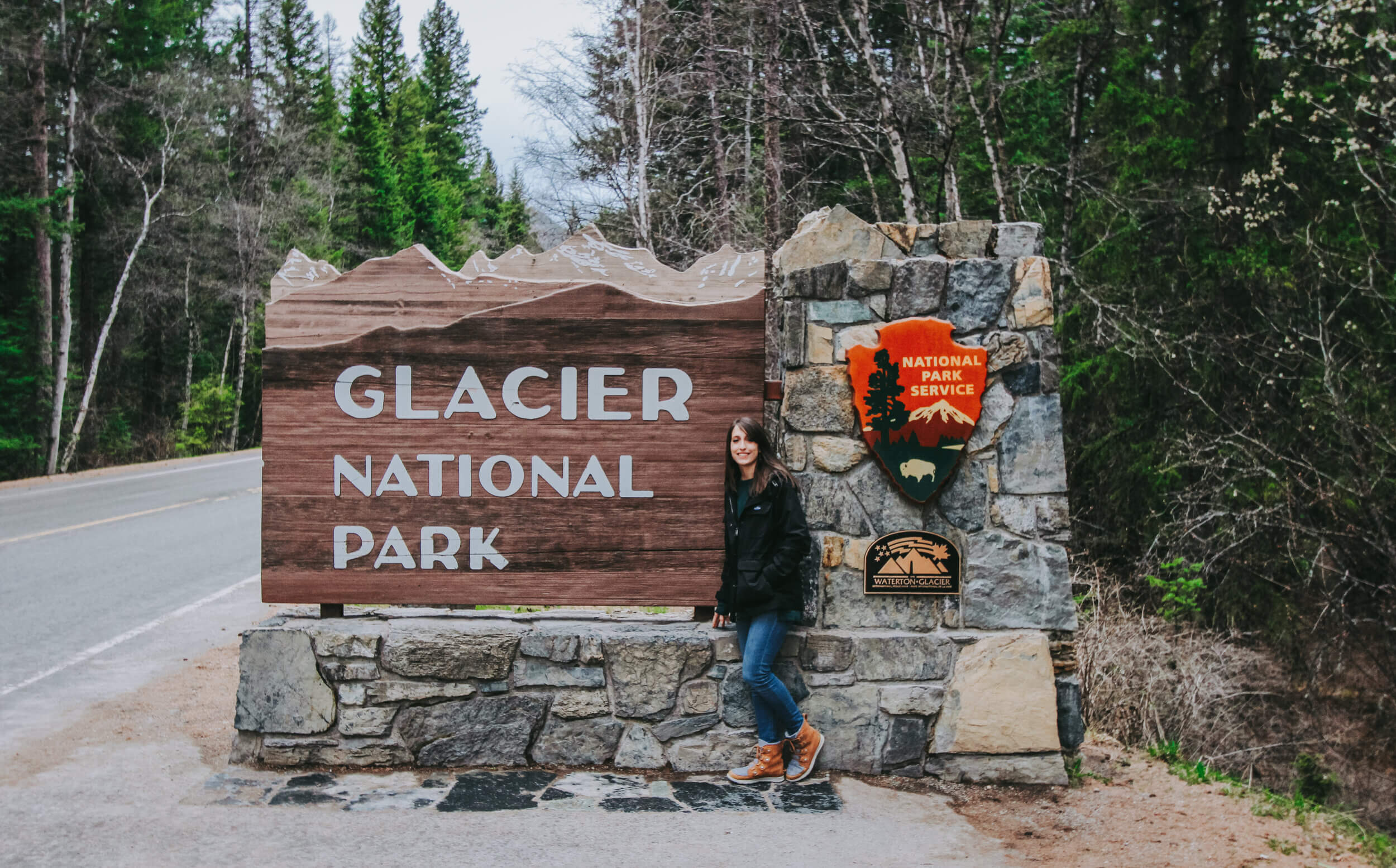
QUICK FACTS ABOUT GLACIER NATIONAL PARK:
Established as a National Park: On May 11, 1910, President Taft signed the bill establishing Glacier National Park as the country’s 10th National Park. The park preserves 1 million acres of the glacier-carved mountains and valleys of northern Montana as well as the lakes, streams and forests for visitors to enjoy.
Location: The West Entrance of Glacier National Park is located at West Glacier, MT 59936. The Saint Mary entrance, located on the East side of the park can be found using the Saint Mary Visitor Center, Browning, MT 59417 address. Another popular entrance, the Two Medicine entrance is located at East Glacier Park, MT 59434.
Best time of year to visit: The peak season at Glacier National Park is during July and August. Daytime temperatures average in the low 80s during the day and can be as low as the 40s at night. Be sure to pack layers and a raincoat for your travels and treks!
How many days are needed inside the Park: At least 2 days. This will give you time to drive the Going-to-the-Sun Road, visit the Many Glacier or Two Medicine area, and hike a few trails while you explore the park!
Closest airport(s): Glacier Park International Airport (FCA) is the closest airport to Glacier National Park. This airport is located in Kalispell, MT, and is roughly 30 miles from the West Entrance of Glacier National Park.
Closest major cities: West Glacier, MT (2.2 miles), Hungry Horse, MT (12.0 miles), Columbia Falls, MT (19.1 miles), Whitefish, MT (27.8 miles), Kalispell, MT (35.3 miles), Bigfork, MT (40.8 miles) and East Glacier Village, MT (57.6 miles).
Notable sites to see: Going-to-the-Sun Road, Lake McDonald, Logan Pass, Grinnell Glacier, St. Mary Lake, Many Glacier Hotel, Two Medicine, Avalanche, and Lake Bowman Lake.
Note: Before traveling to Glacier National Park, be sure to do some research on the National Park Service Website. On their website, you will find official information about road closures, current park conditions, park reservations, and more. Our travels to Glacier National Park were in late April/ early May, and this meant that not only was there still some snow remaining from the winter, but only certain entrances and roads to the National Park were open. For instance, only portions of the Going-to-the-Sun Road were open, so we were only able to explore from the West Entrance to the Road’s closure close to the Lake McDonald Lodge.

GOING-TO-THE-SUN ROAD
Completed in 1932, the Going-to-the-Sun Road is a 50-mile paced highway that runs east and west spanning the width of Glacier National Park. This is a great road to drive because it passes through large glacial lakes, cedar forests, and alpine tundra, exposing visitors to diverse types of terrain in the park. There are several viewpoints and pullouts along the road to allow for an extended time to take in all of the views and to snap a few photographs. Without stopping, it takes at least 2 hours to drive the full 50 miles of the Going-to-the-Sun Road. It is worth traveling in either direction, as the views from one side of the road are much different than the other.
If traveling to the park in 2021, you will need a National Park pass and an Entry Reservation Ticket or a reservation for a service on the Going-to-the-Sun Road to gain access to this area of the Park. You can find more information on the National Park Service’s official website here.
QUICK NOTES ABOUT THE GOING-TO-THE-SUN ROAD:
- Gas is not available anywhere inside Glacier National Park or on the Going-to-the-Sun Road.
- Food and Lodging can be found at Rising Sun, Lake McDonald Lodge, and Apgar Village.
- There are 3 Visitor Centers located along the road: Apgar Visitor Center, Logan Pass Visitor Center, and St. Mary Visitor Center. All have restroom facilities, drinking water, exhibits, and information to plan your visit while at the park.
- Portions of the road are open year-round, but the entirety of the Going-to-the-Sun Road will not usually open until late June at the earliest.
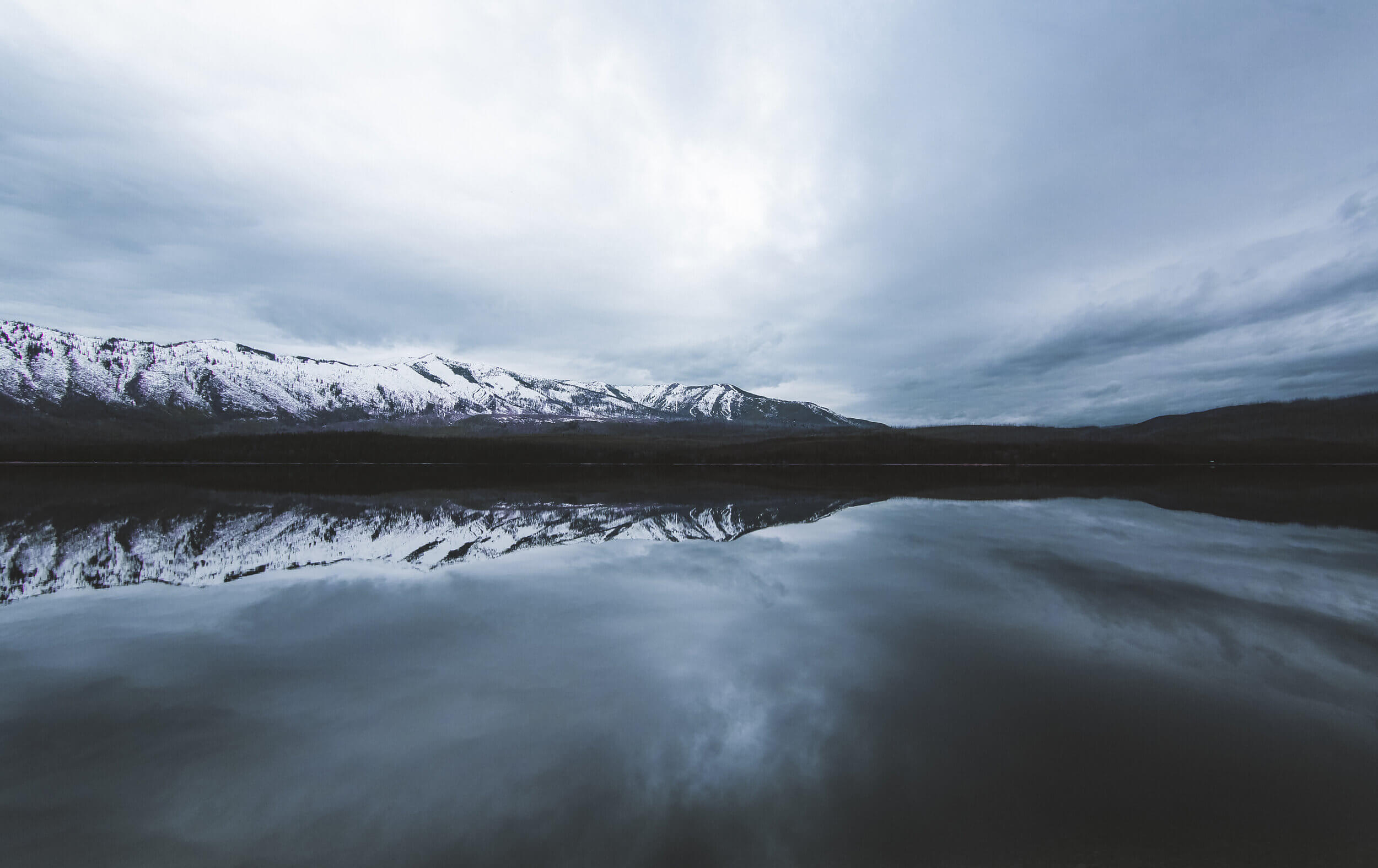
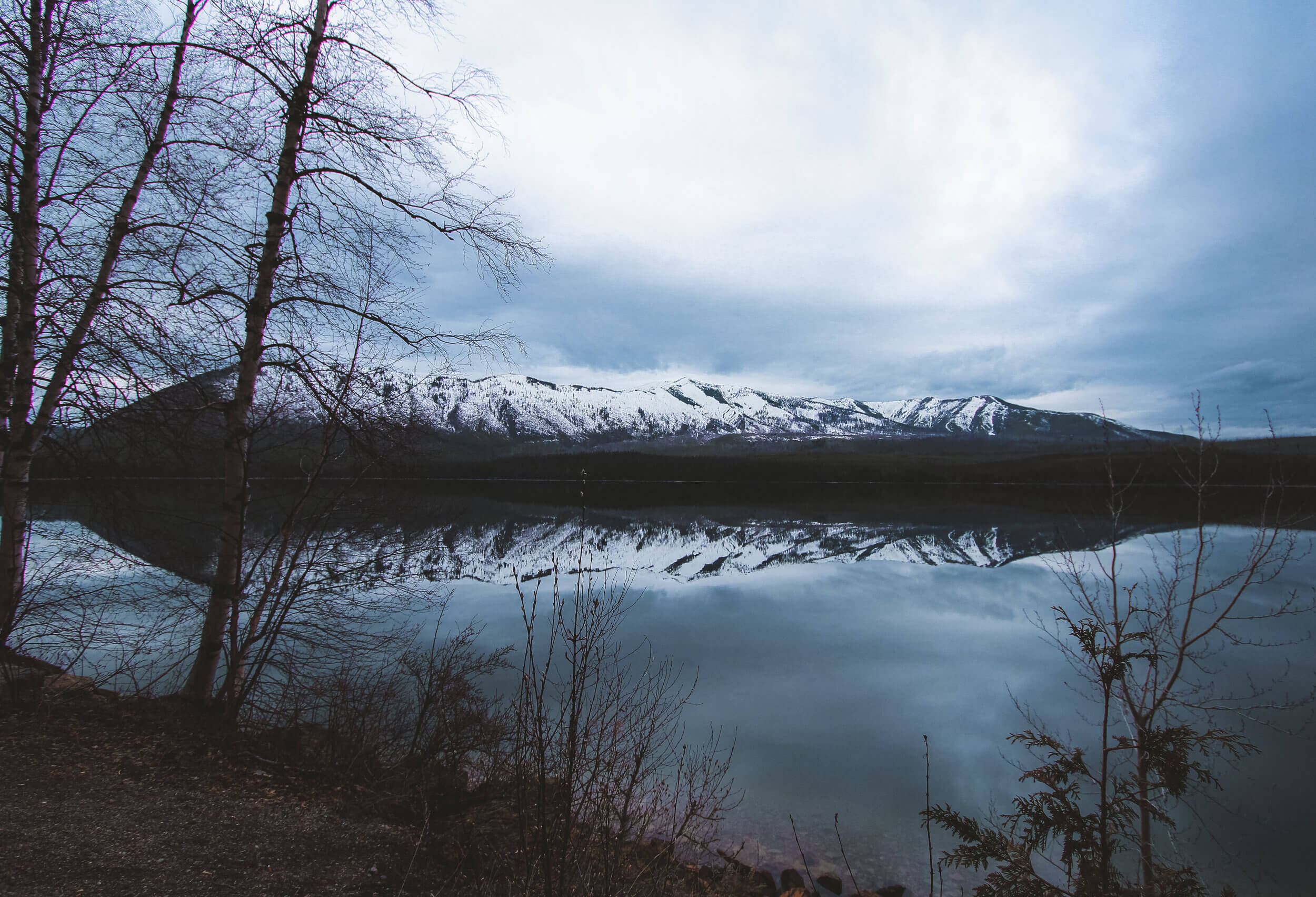
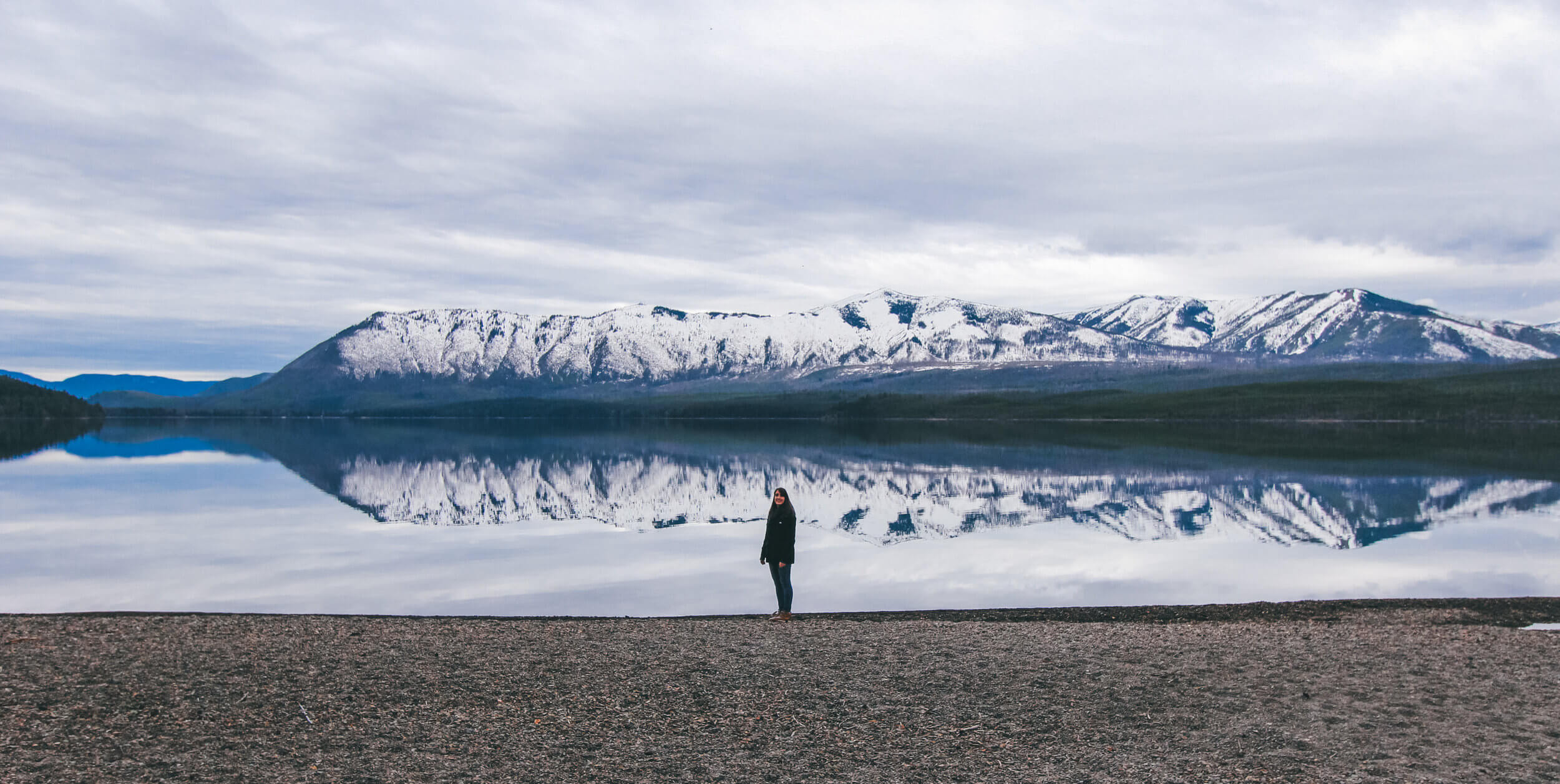
During our visit, the Going-to-the-Sun Road was only partially open due to inclement weather. From the West Entrance of the park, we were only able to drive on the road up to the Lake McDonald Lodge before its closure. There are several pull-outs along the road where you can stretch your legs and walk down to view the sites of Lake McDonald.
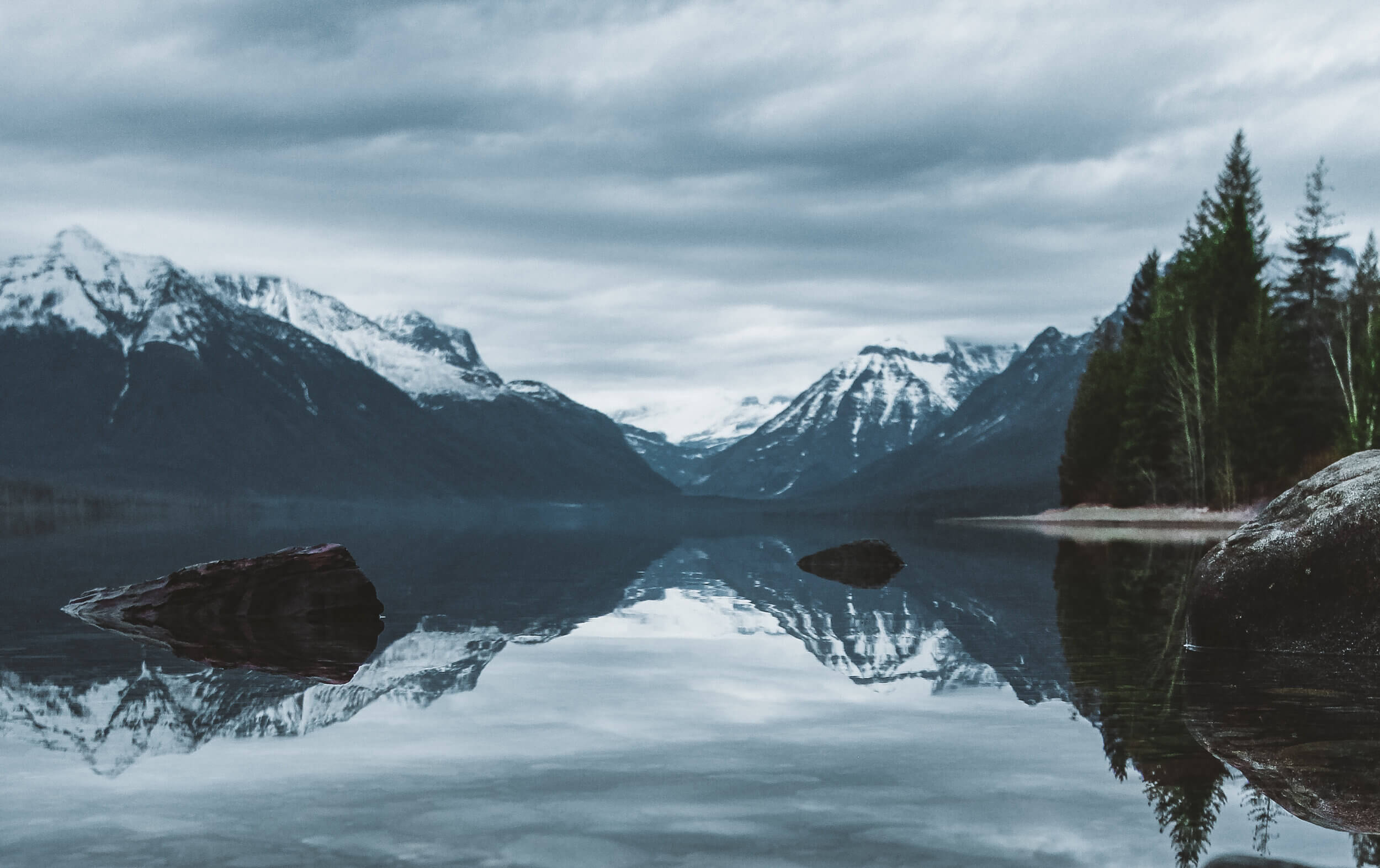
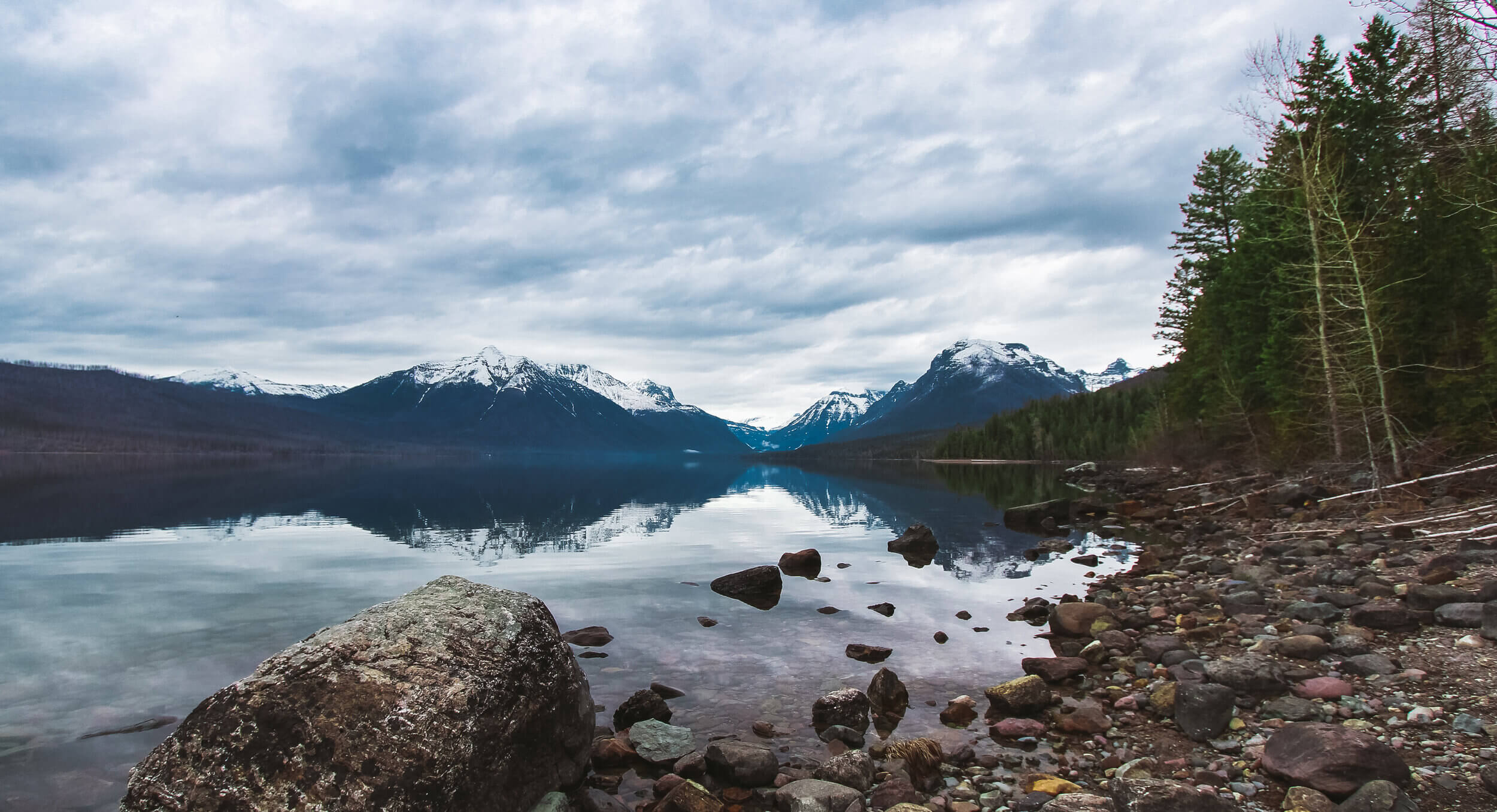

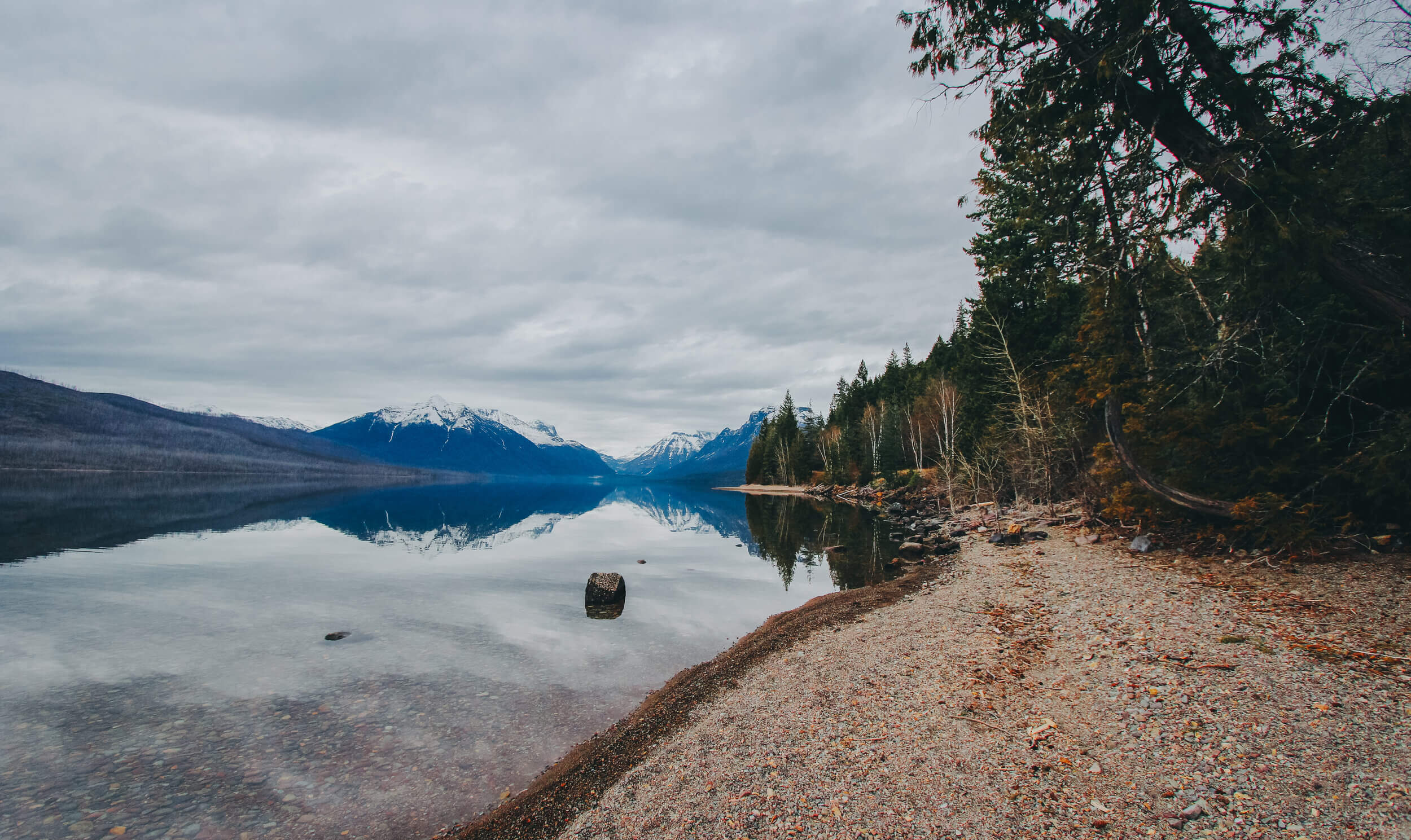
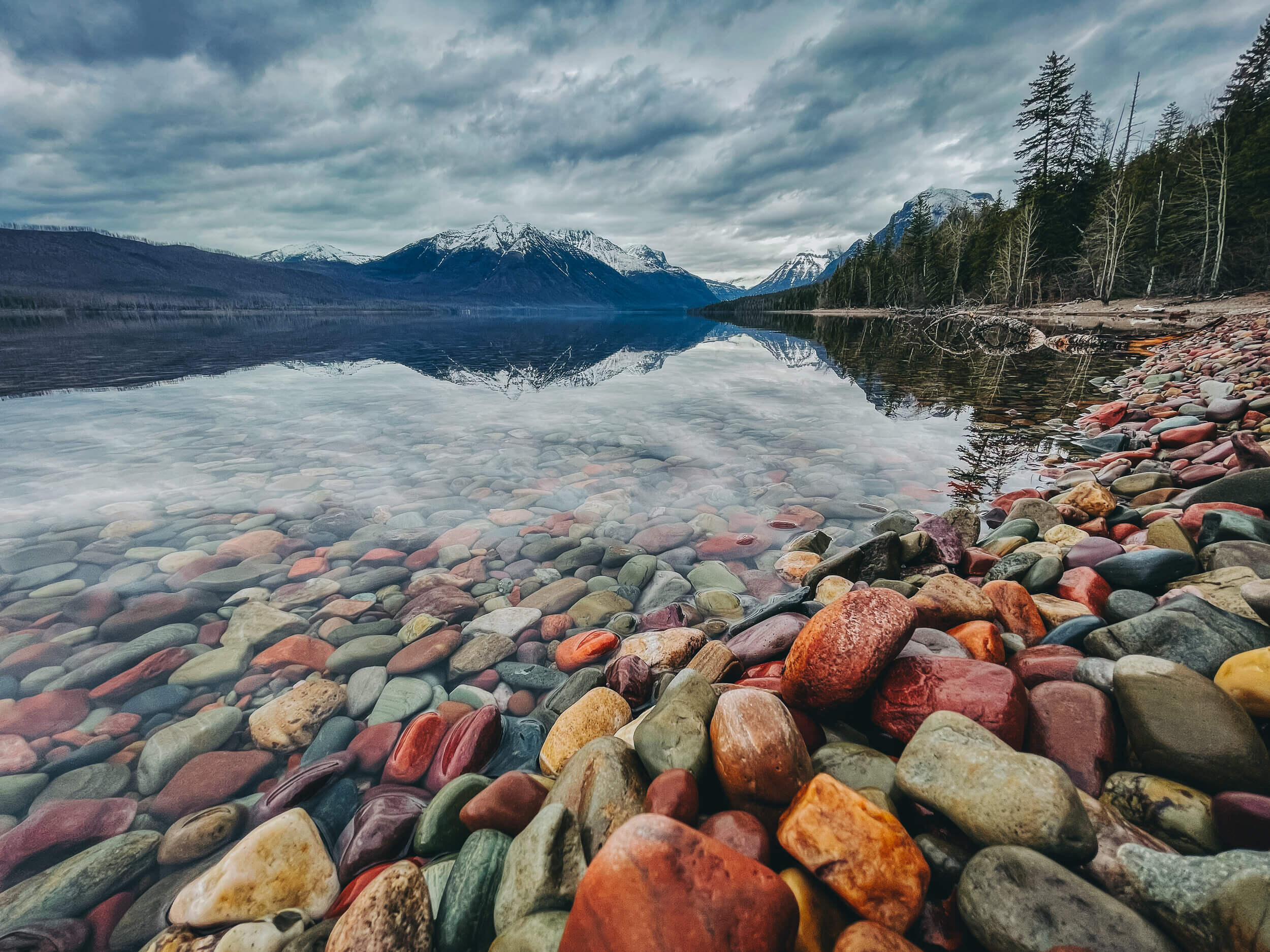
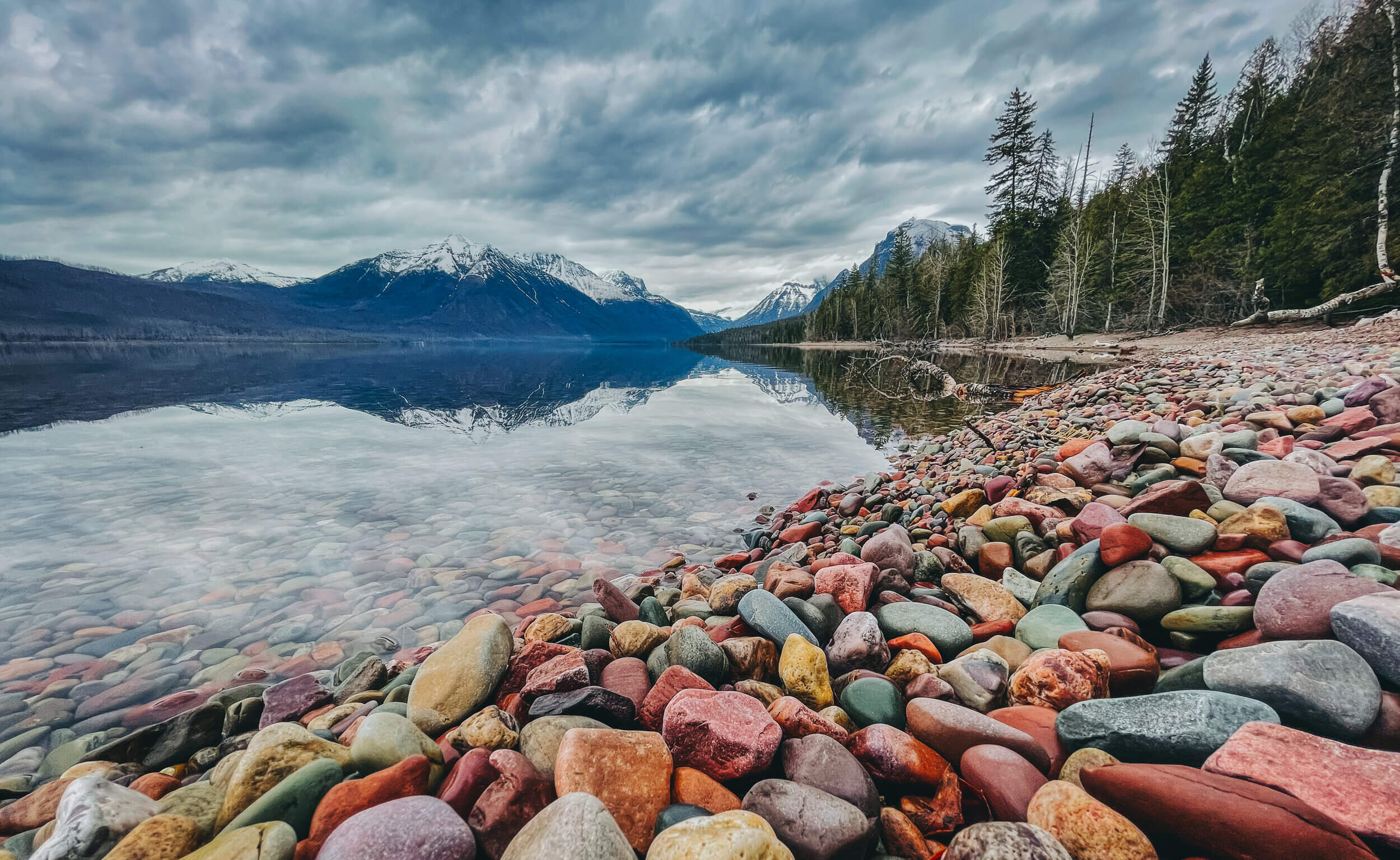
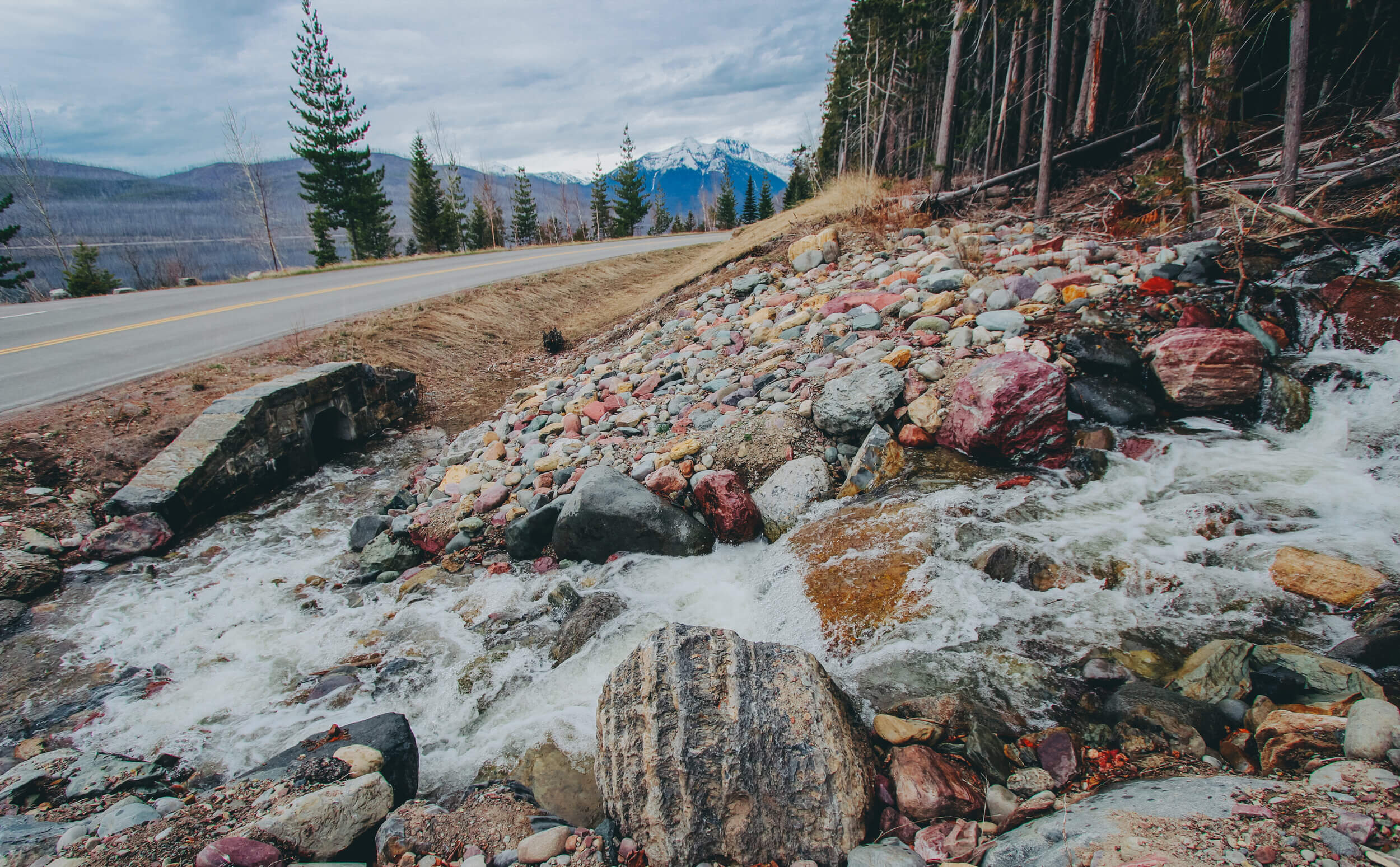
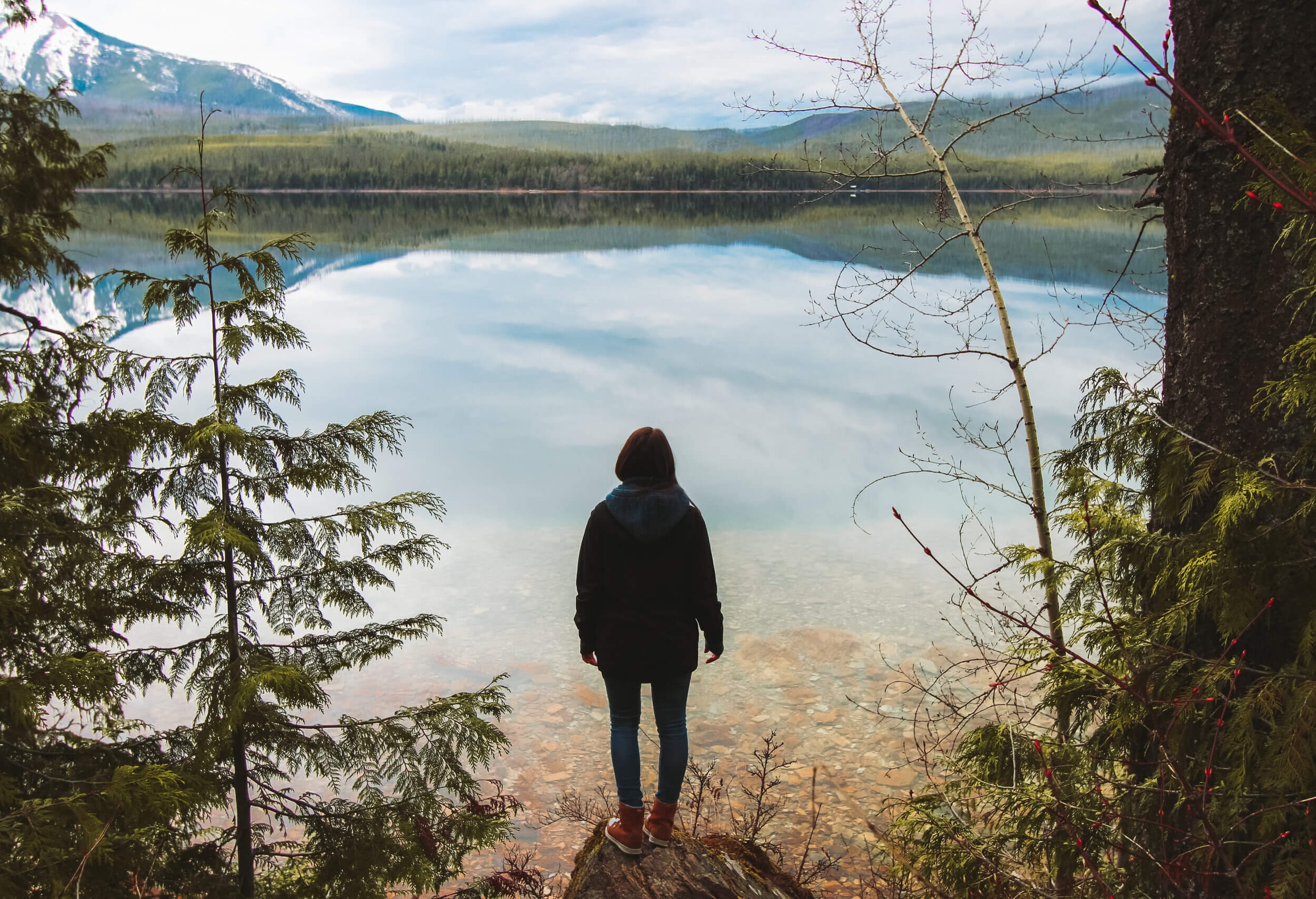
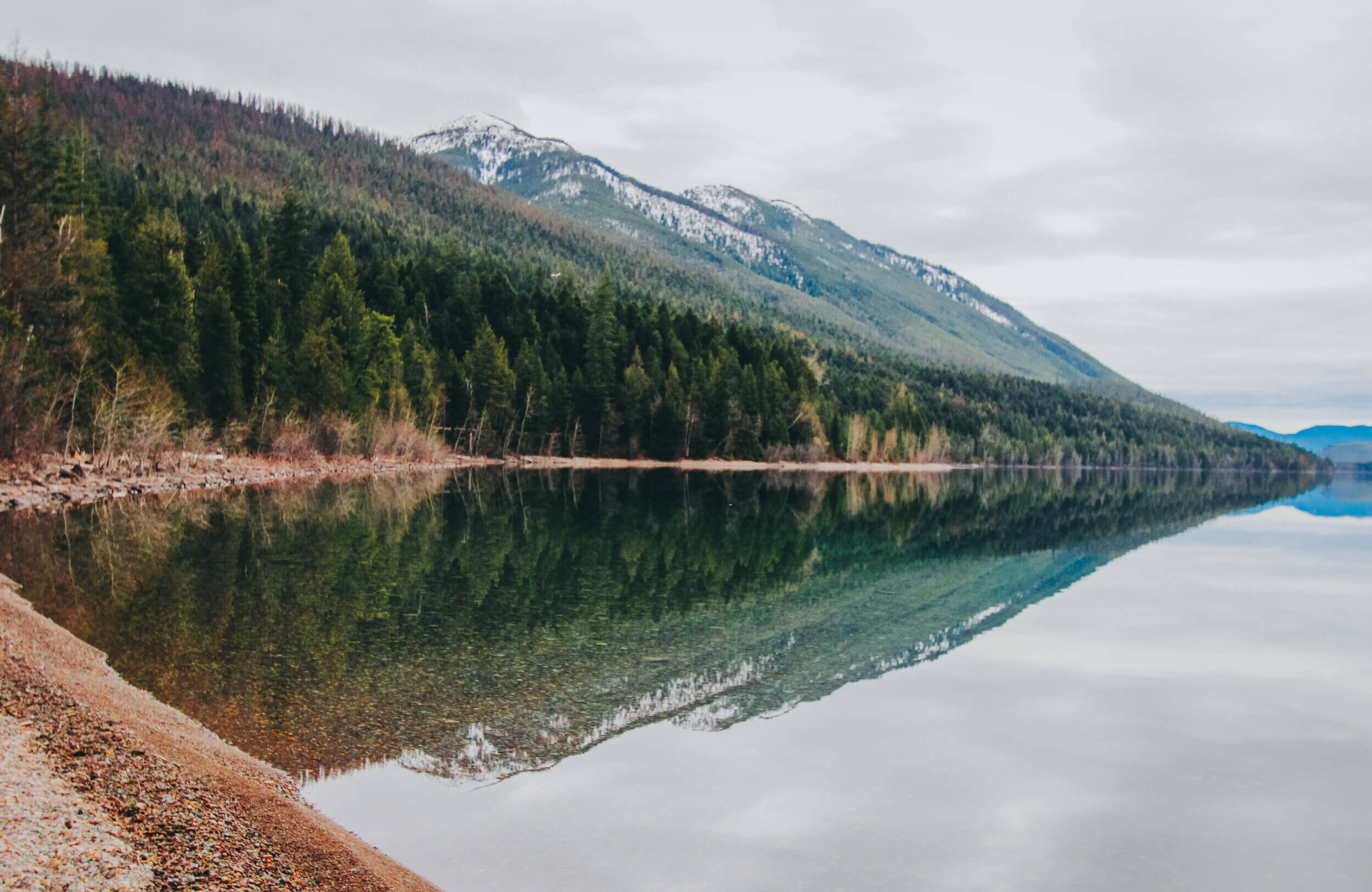
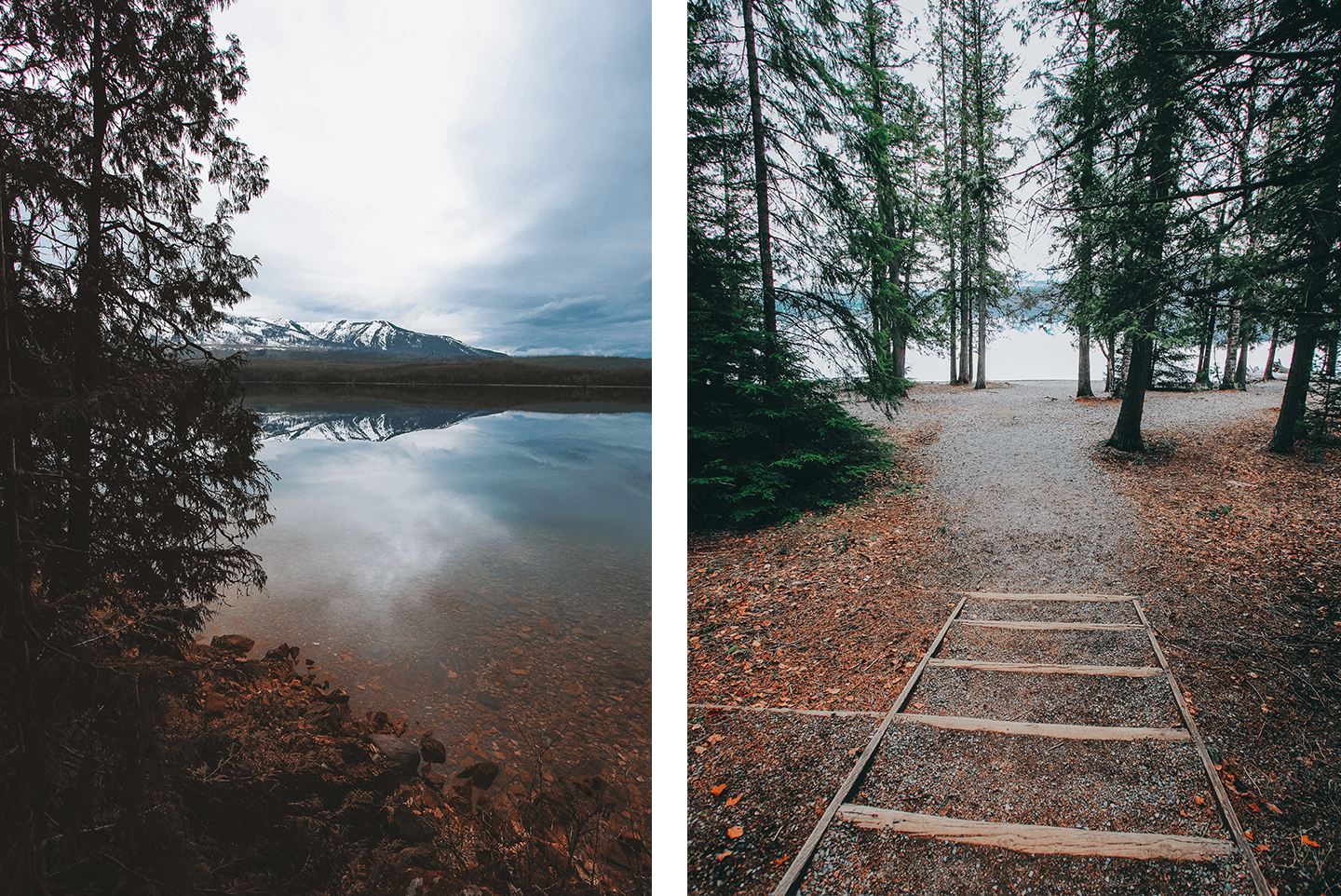

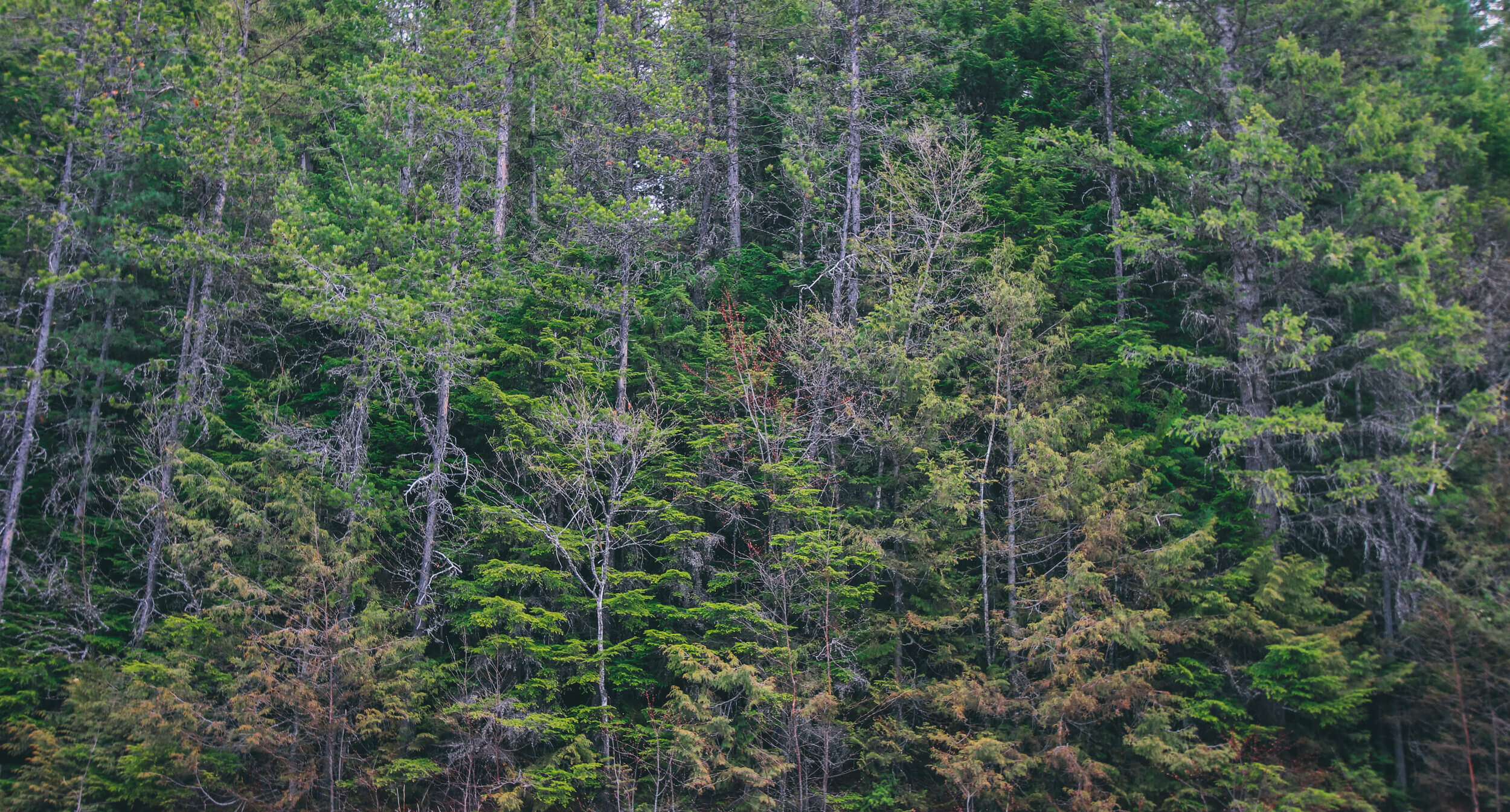
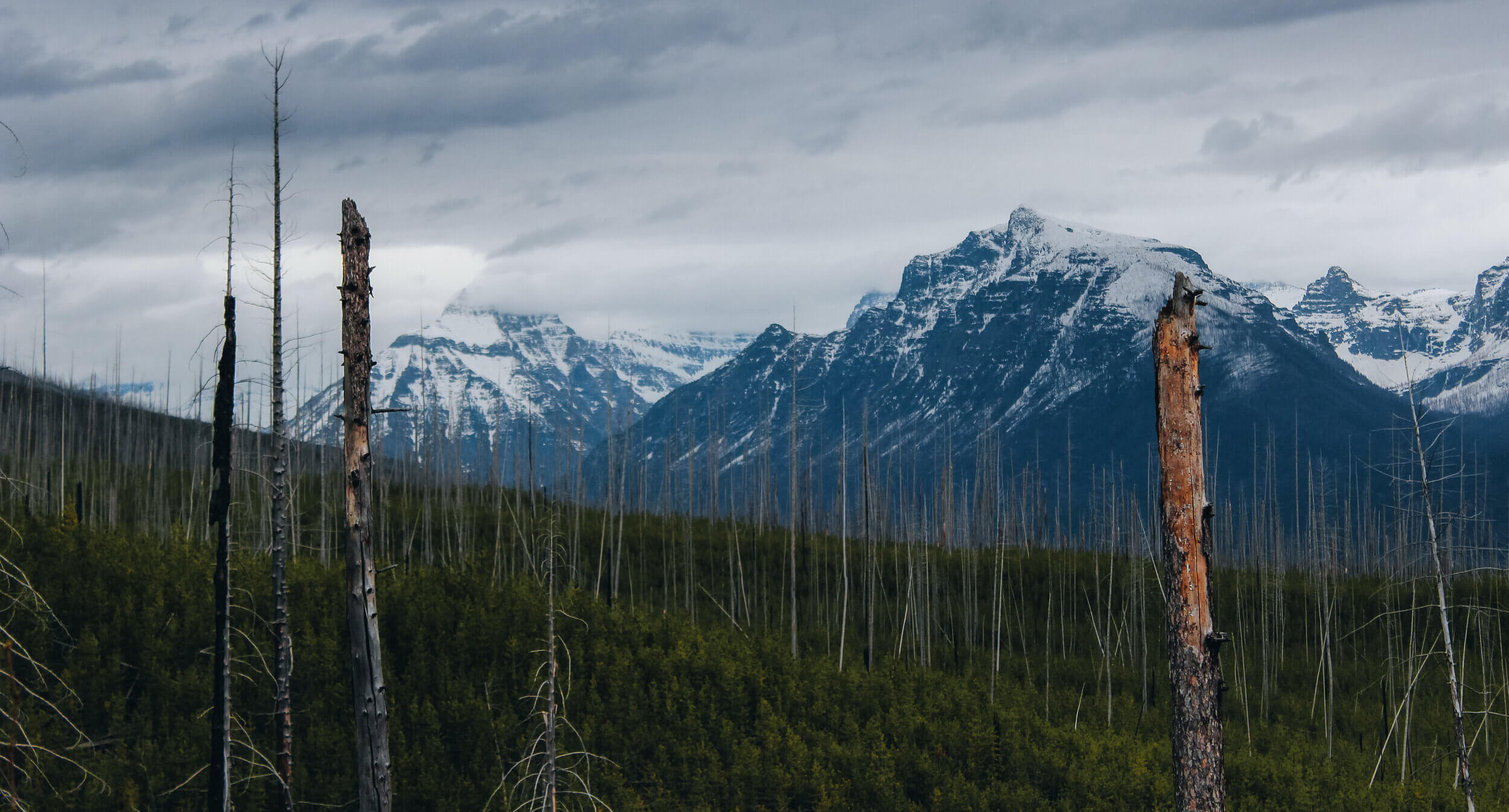
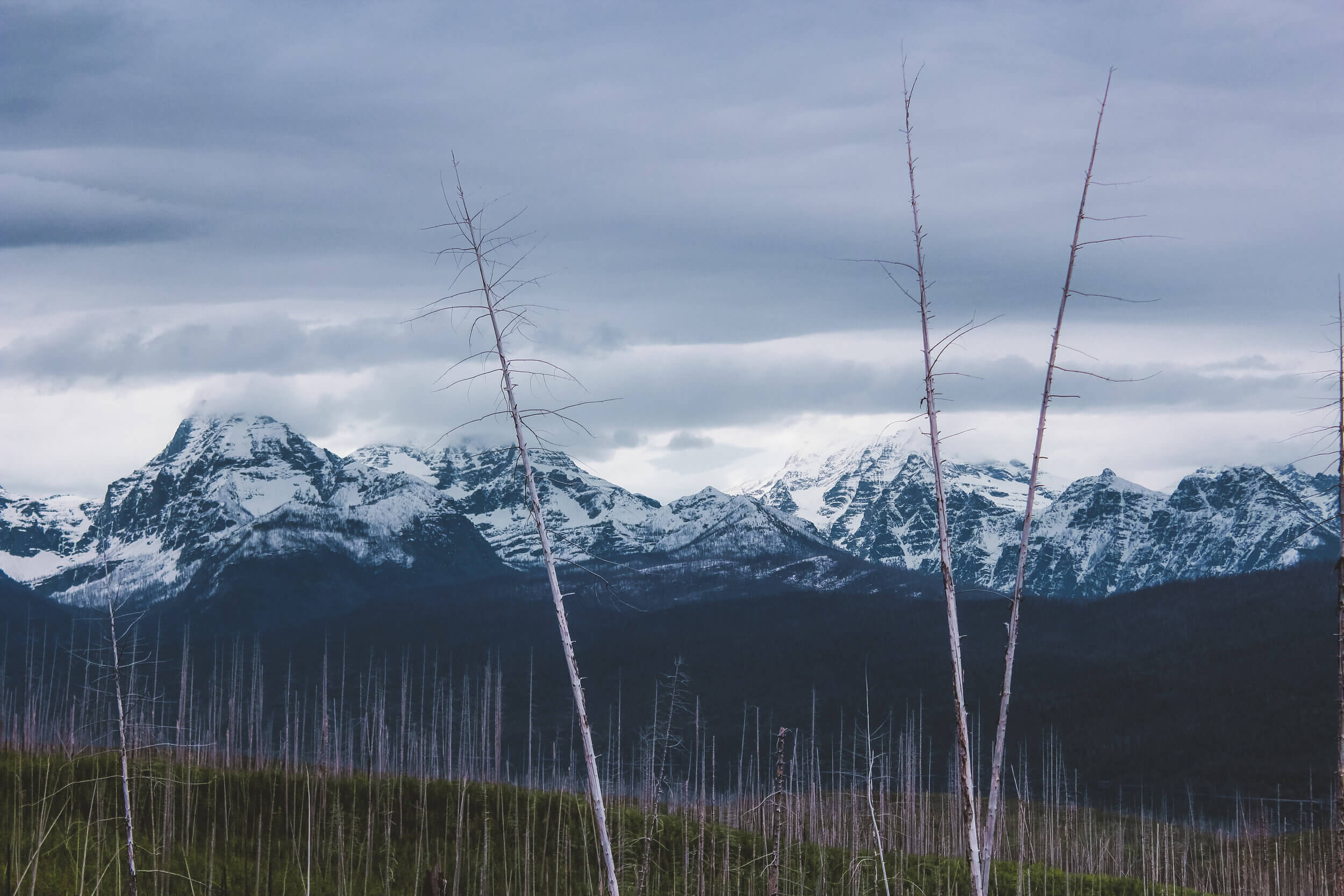
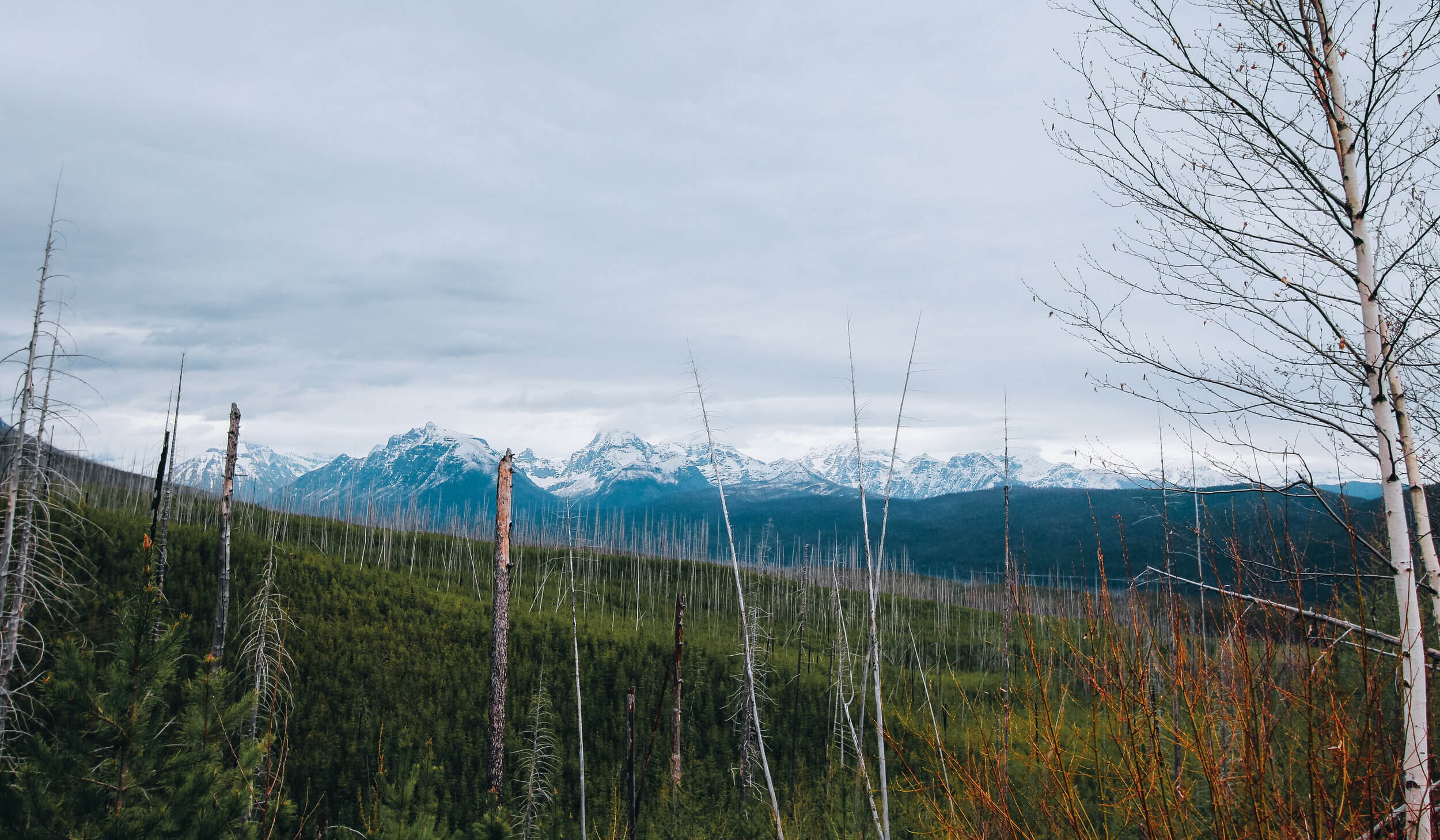
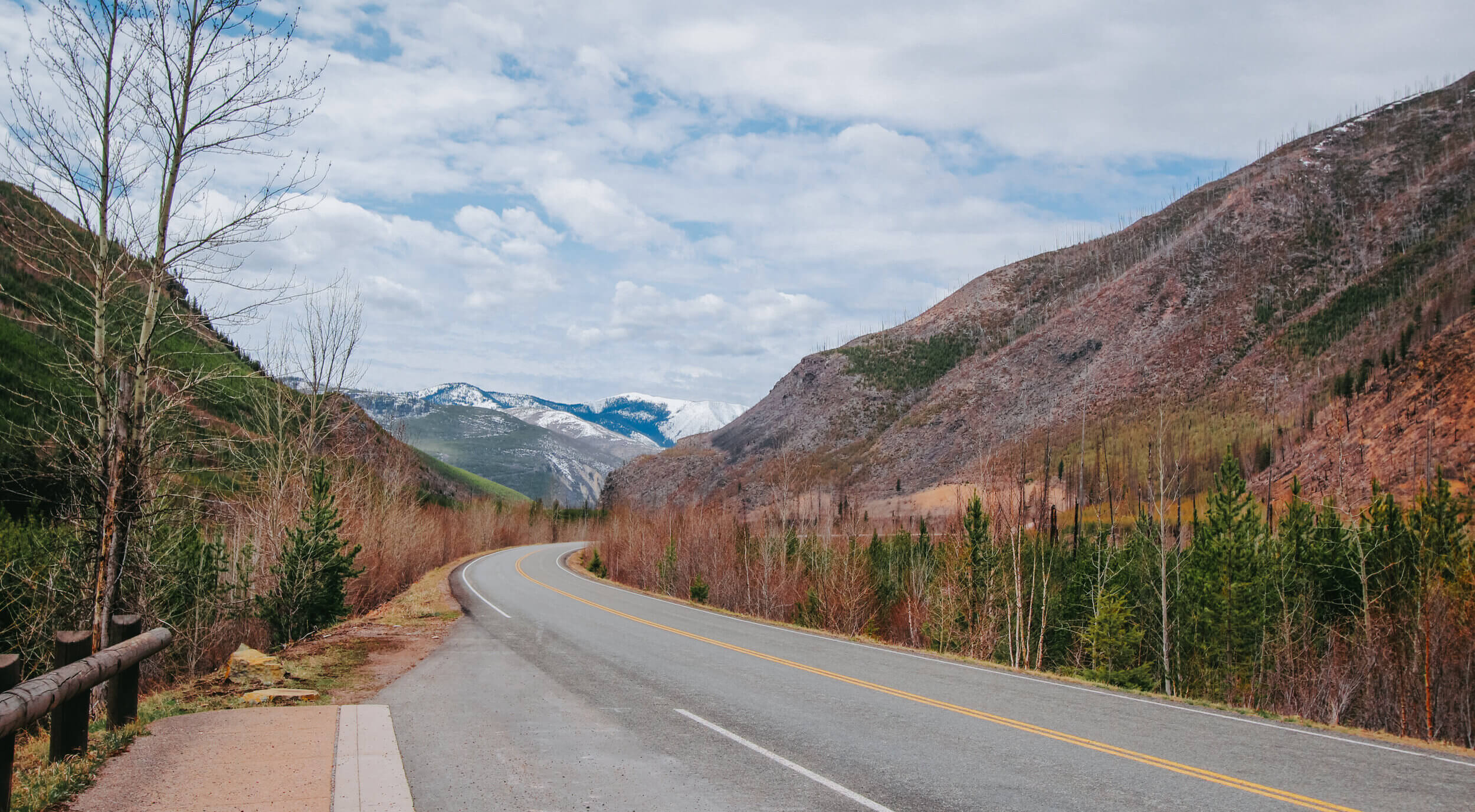
LAKE MCDONALD
At approximately 10 miles long, over a mile wide, and 472 feet deep, Lake McDonald is Glacier National Park’s largest lake and the center of activity on the west side of the park. The lake’s valley is filled with stunning sights, hiking trails, diverse plants, and wildlife as well as the Lake McDonald Lodge along its shore.
You will notice that the shores of Lake McDonald are surrounded by colorful rocks and pebbles. The rocks are primarily sedimentary, and their striking colors are a result of the iron in their composition. When the waters are calm, you can see the rocks clearly across the lake. It is truly a sight to see!

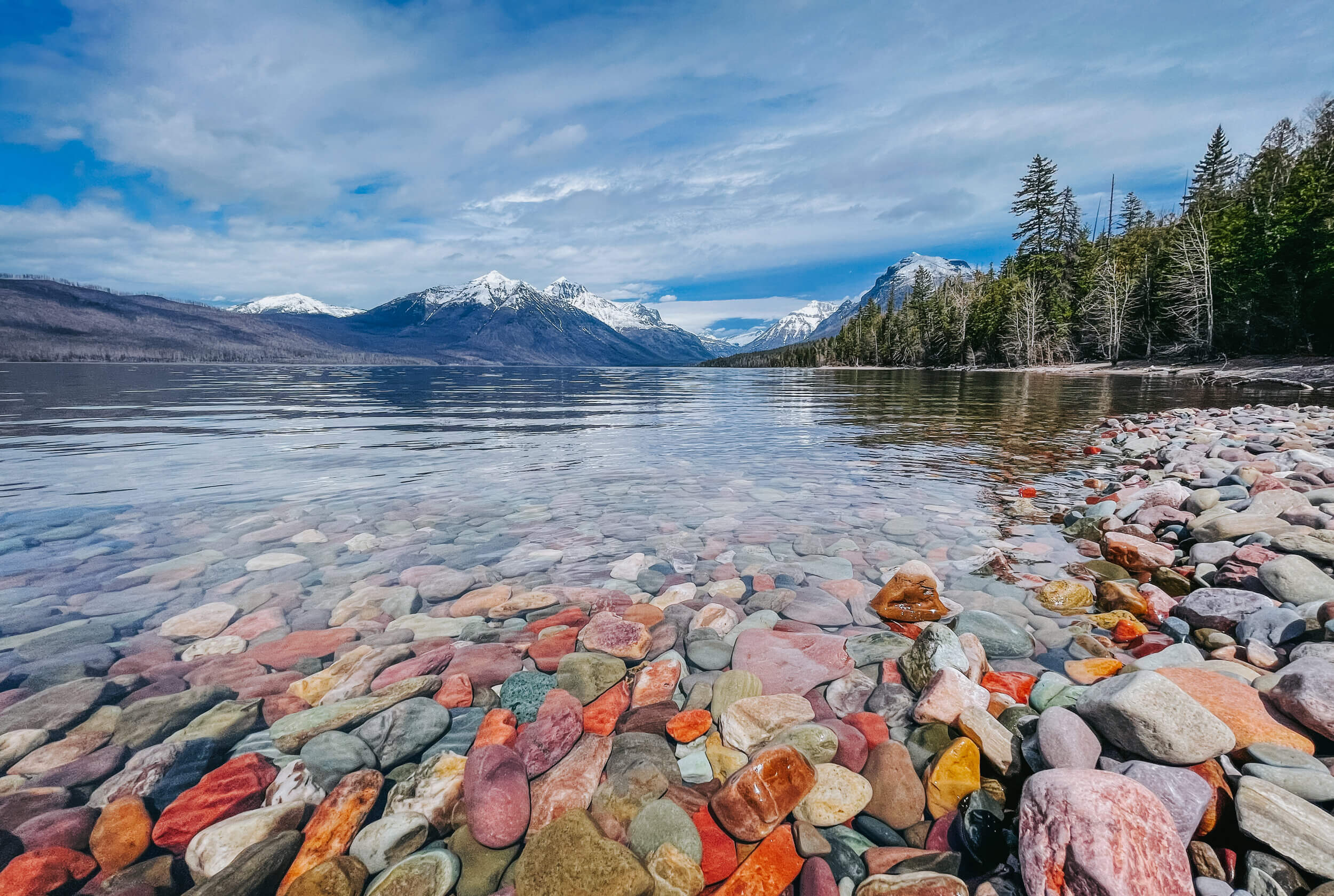

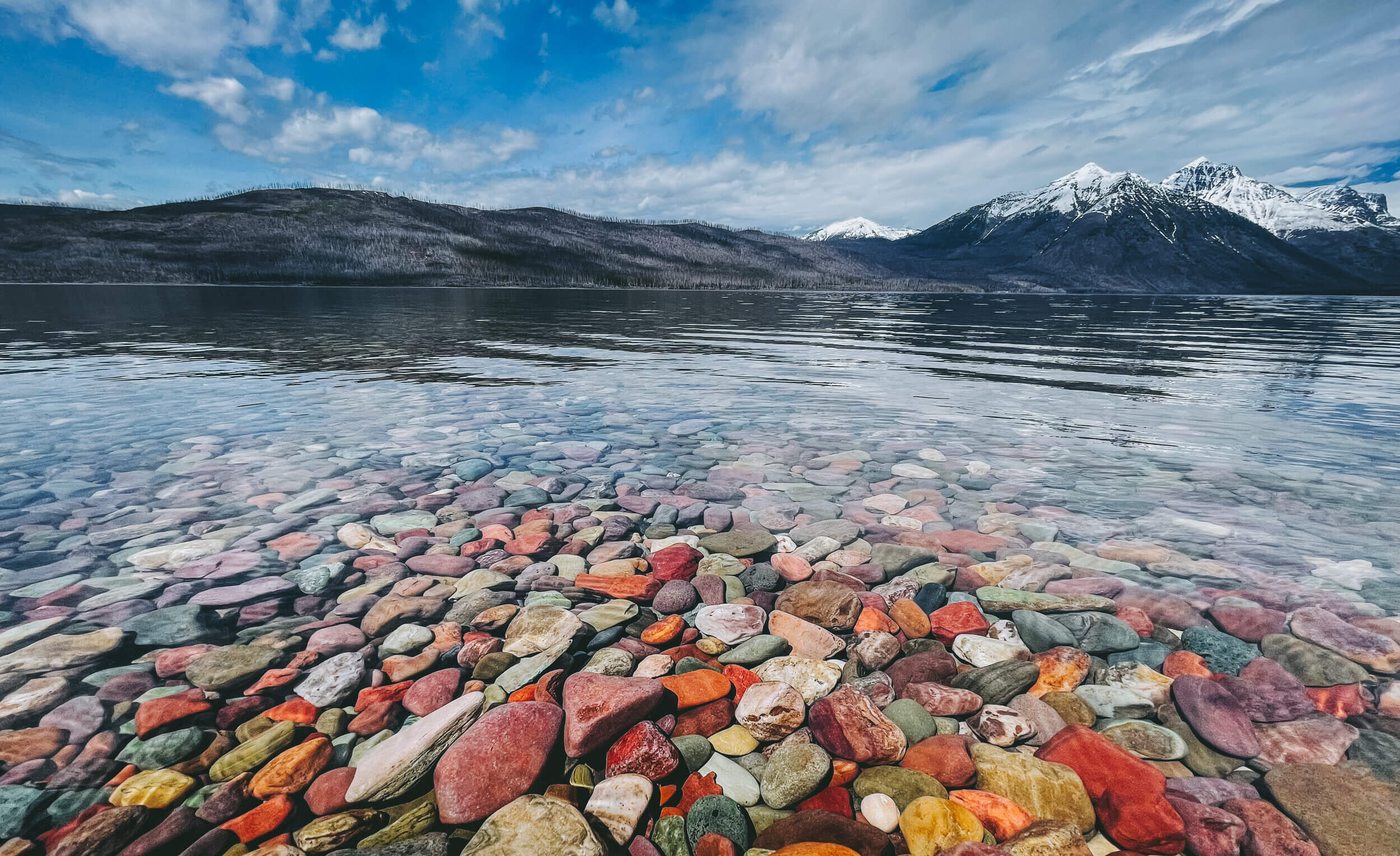
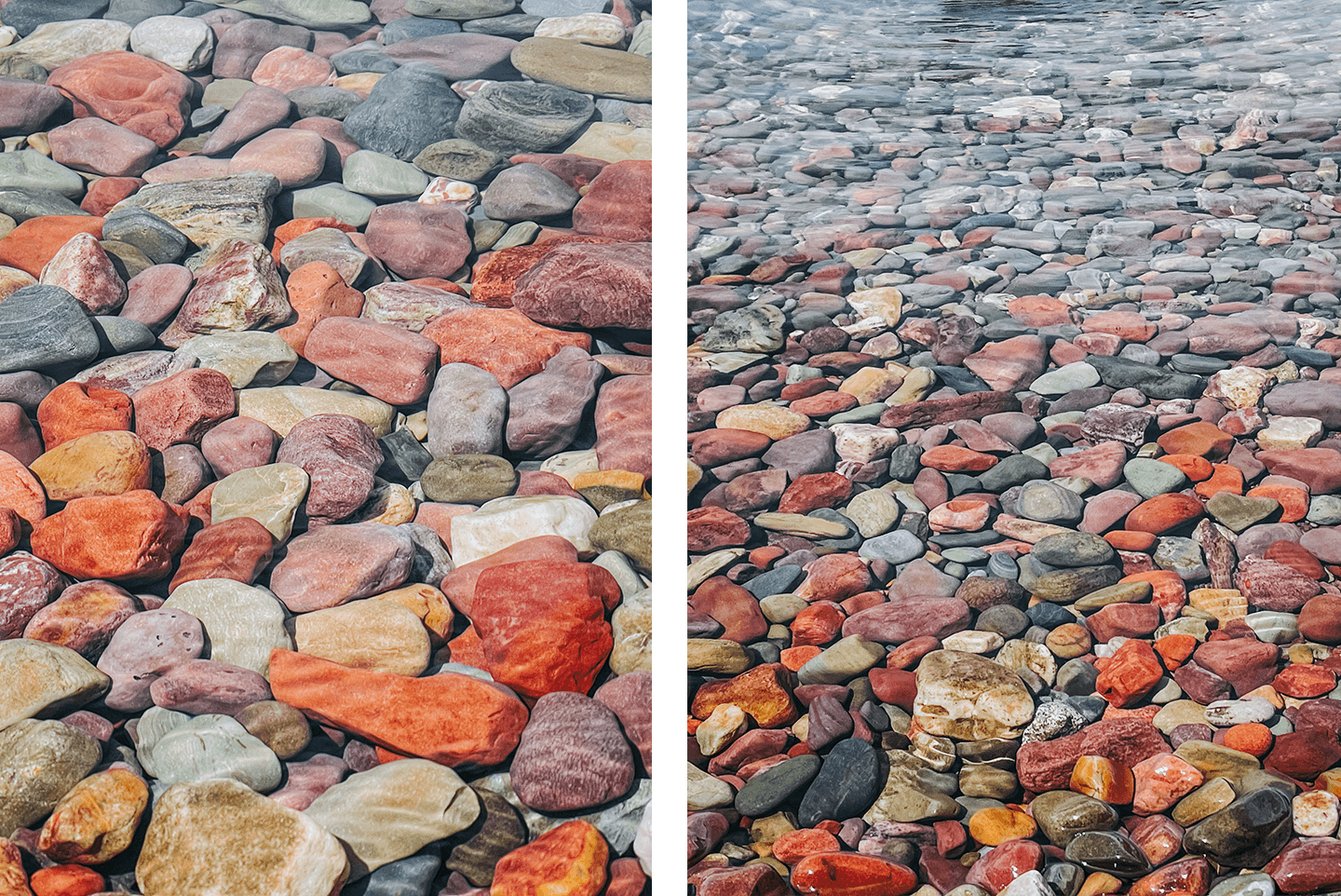
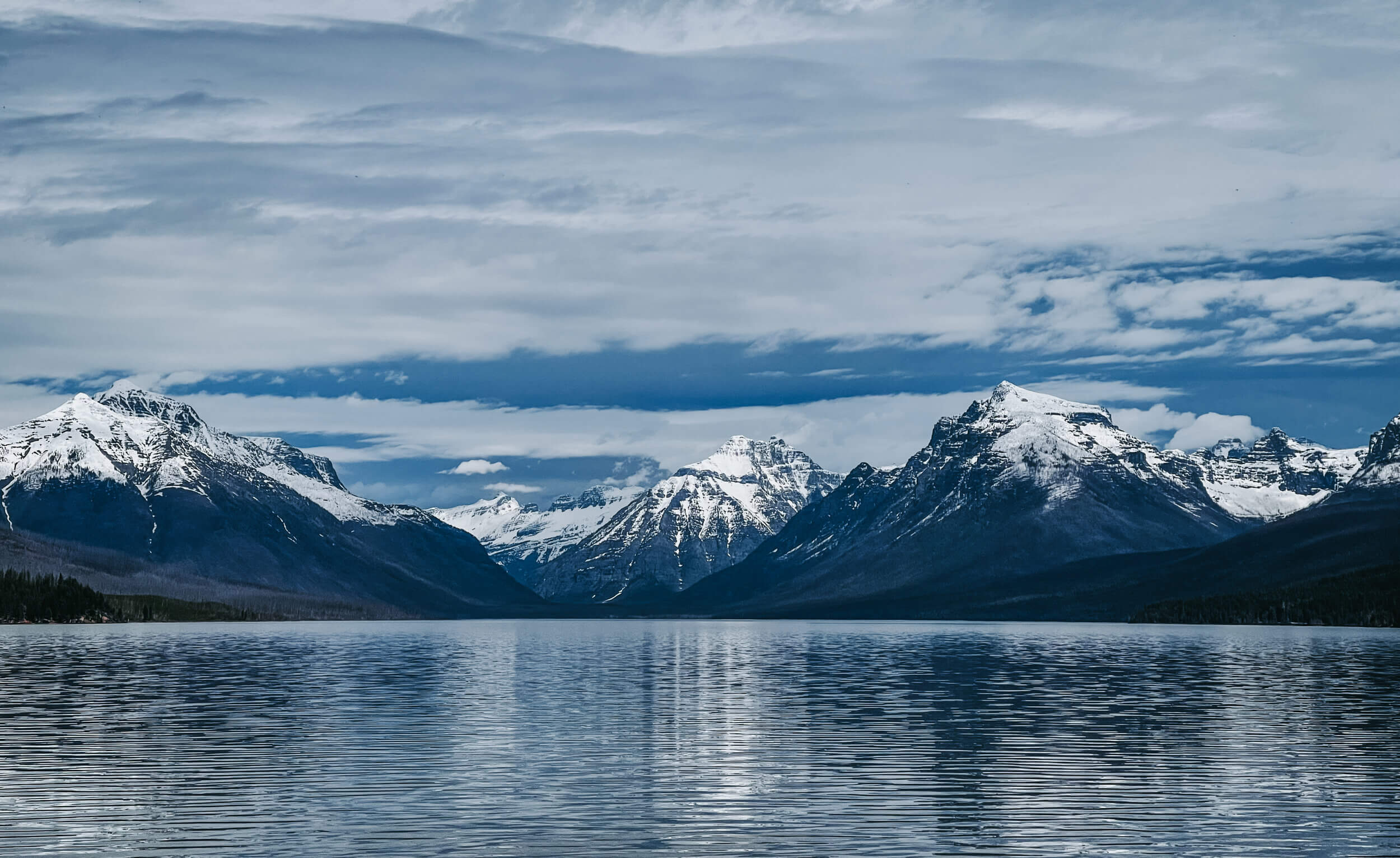


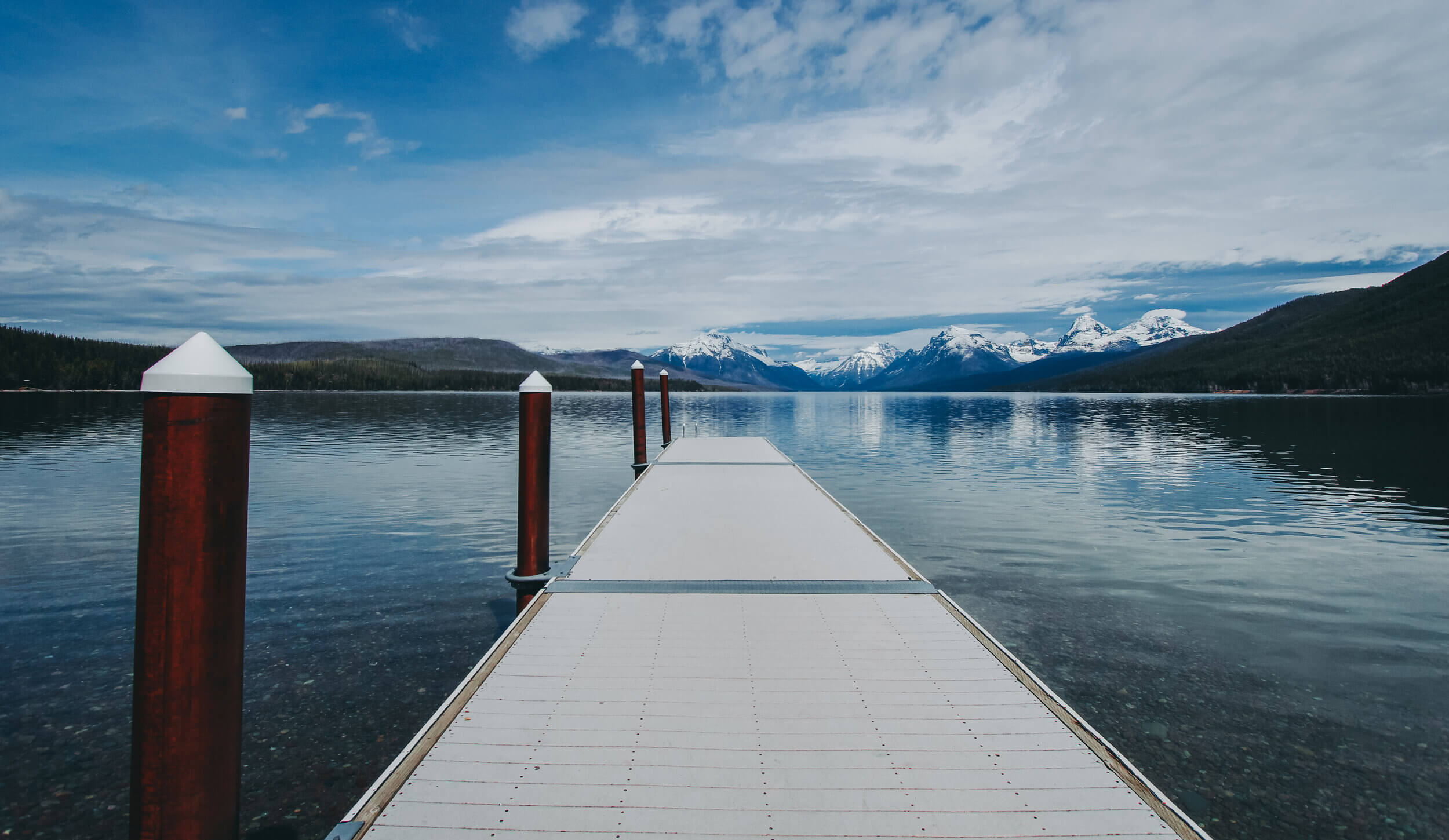

On the shores of the Apgar Loop, located by the West Entrance of the Park, you can see Lake McDonald at its southwest point and catch a glimpse of some of the mountain peaks in the park. In this area of the Park, lodging, dining, and other activities are available like boat rentals and more!
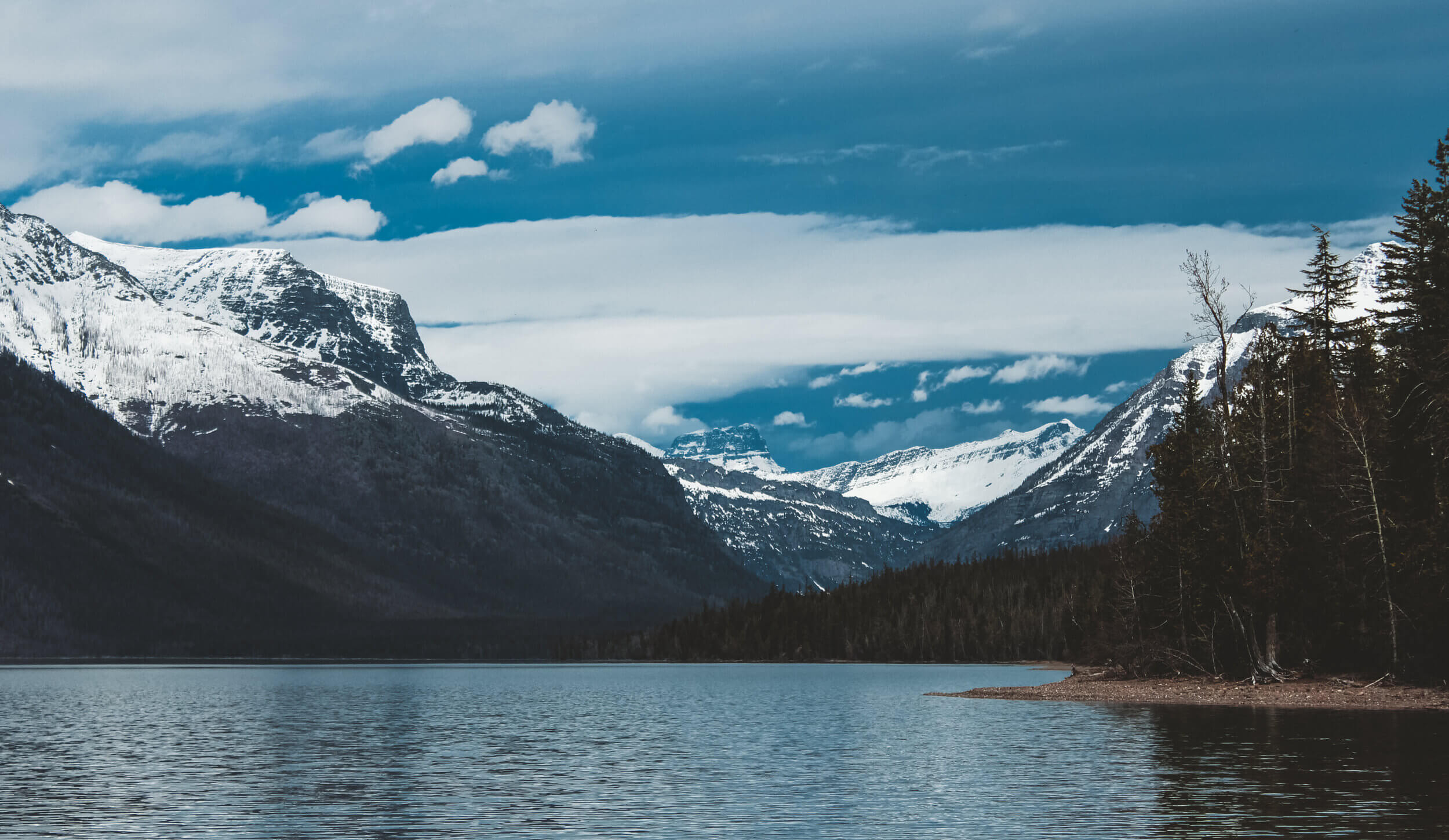
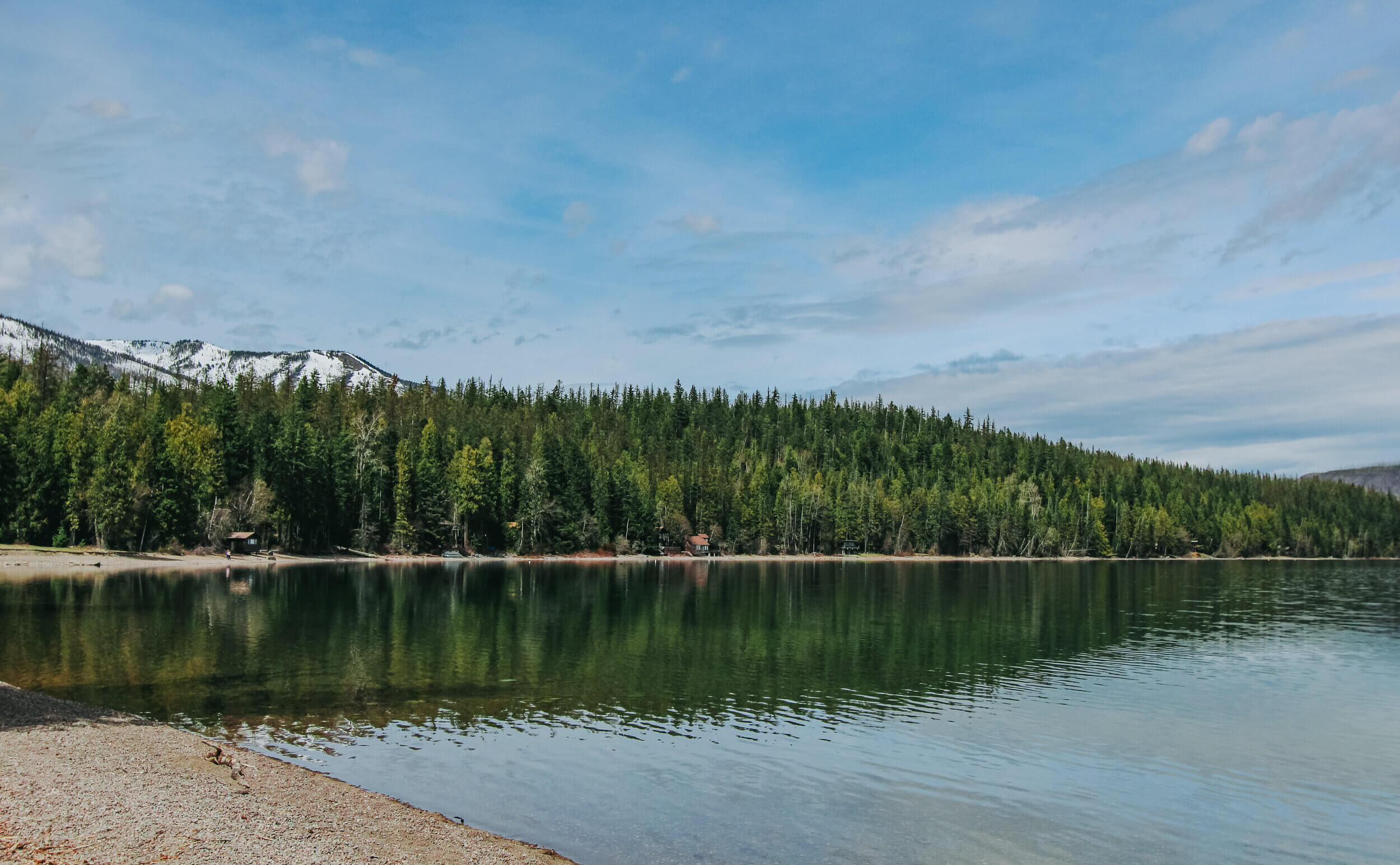

LAKE MCDONALD LODGE
Constructed in 1913-1914, the Lake McDonald Lodge resembles a rustic hunting lodge with Swiss-influenced architecture. This warm and inviting lodge provides lodging and comfort for overnight guests who prefer something a bit less rustic than a campground. After a long day of hiking, horseback riding, or a scenic boat tour, cozy up in front of the massive fireplace inside Lake McDonald Lodge and relax in style in the middle of the wilderness. You can stay in both the main building of the lodge as well as individual cabins close to the shores of Lake McDonald. The lodge was closed for the season during our visit, so I was not able to step inside the main building, but we were able to explore the grounds!
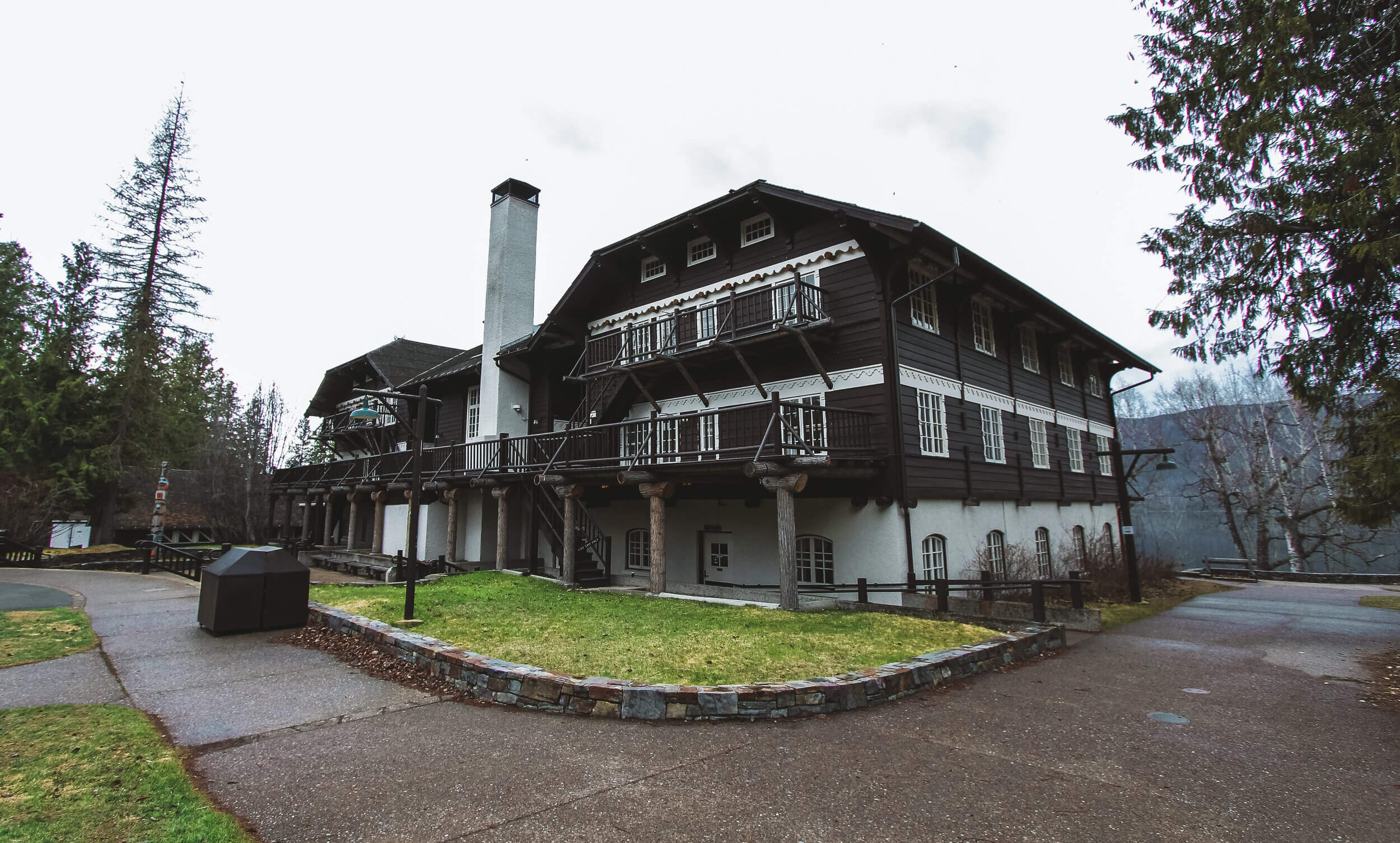

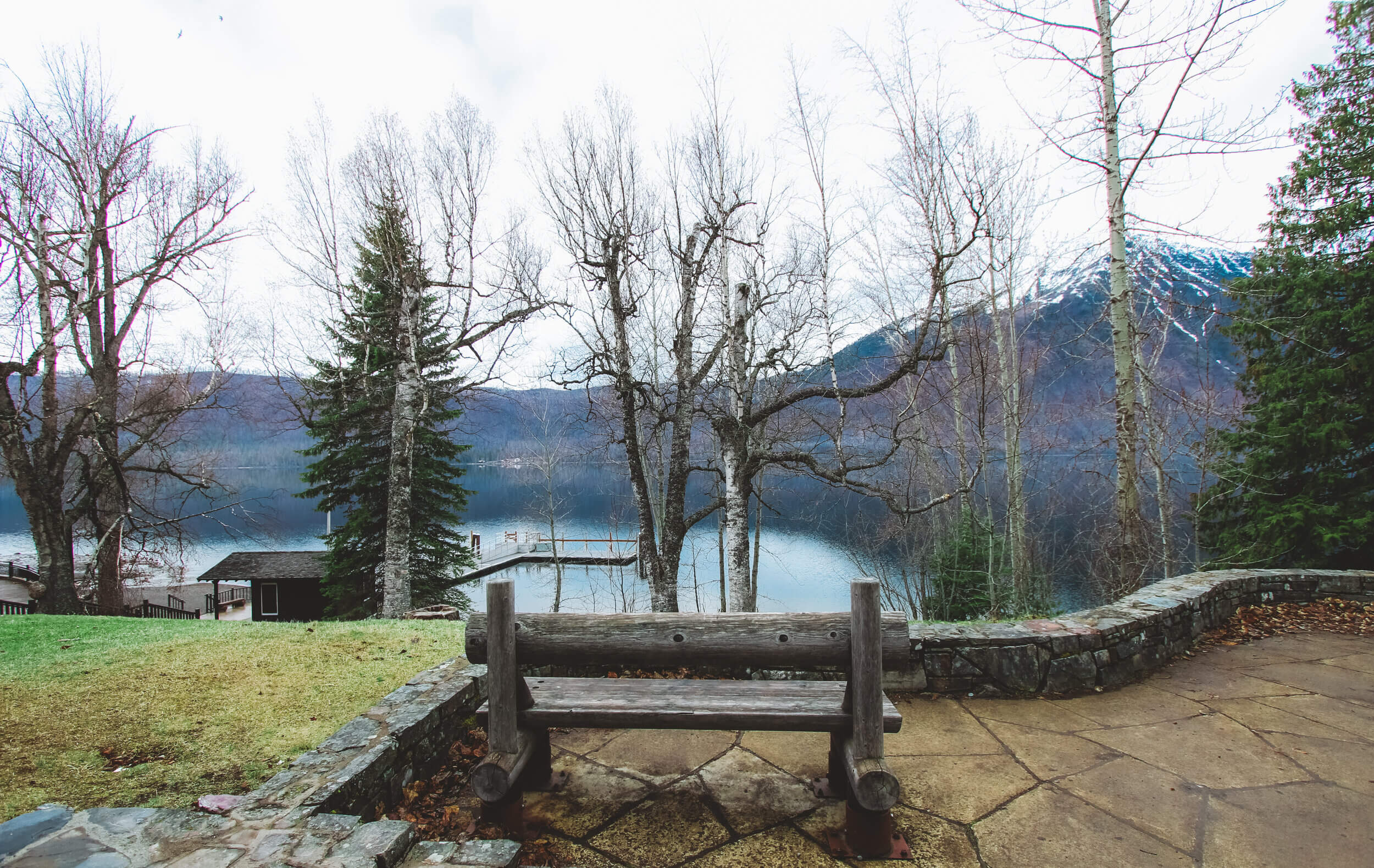
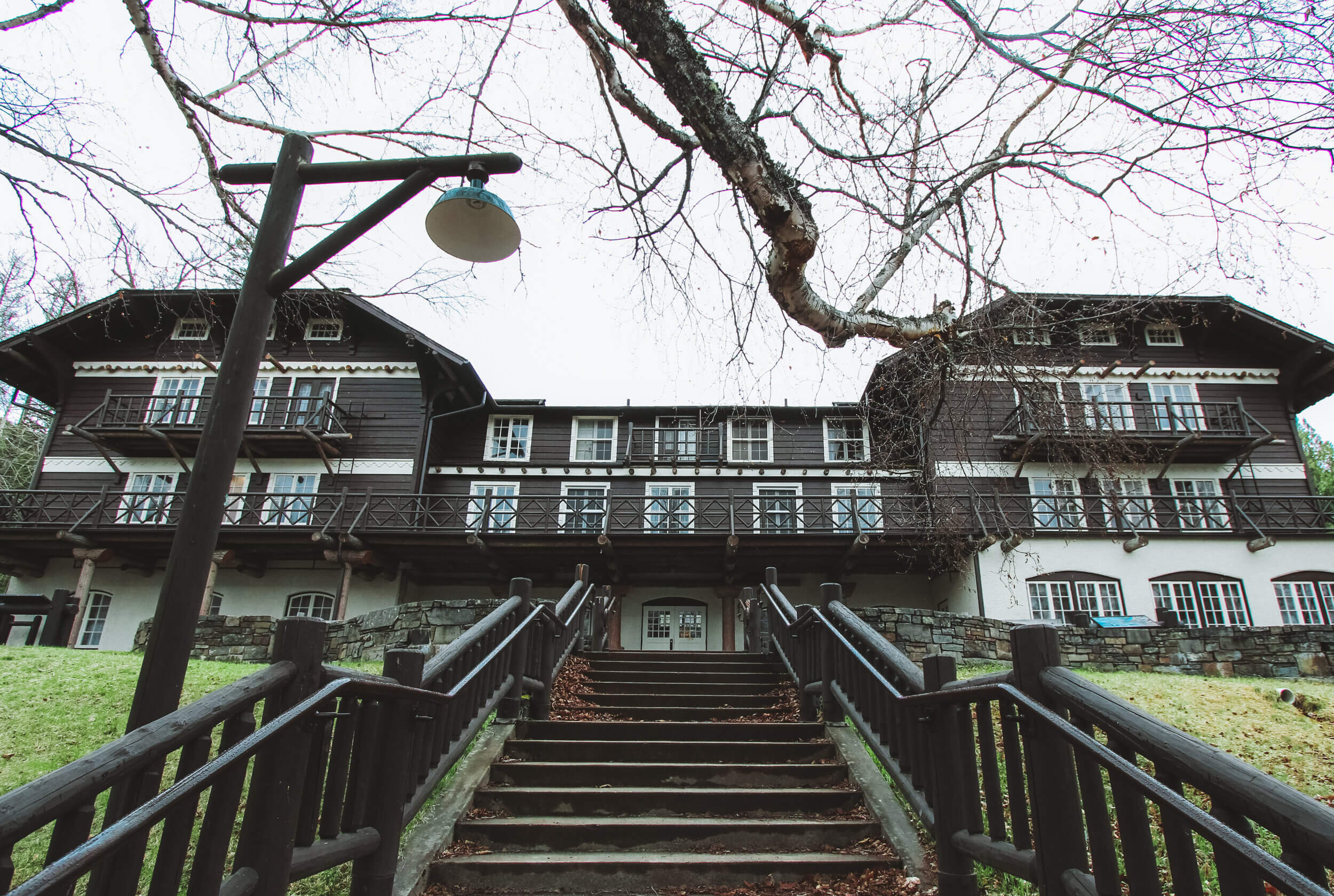
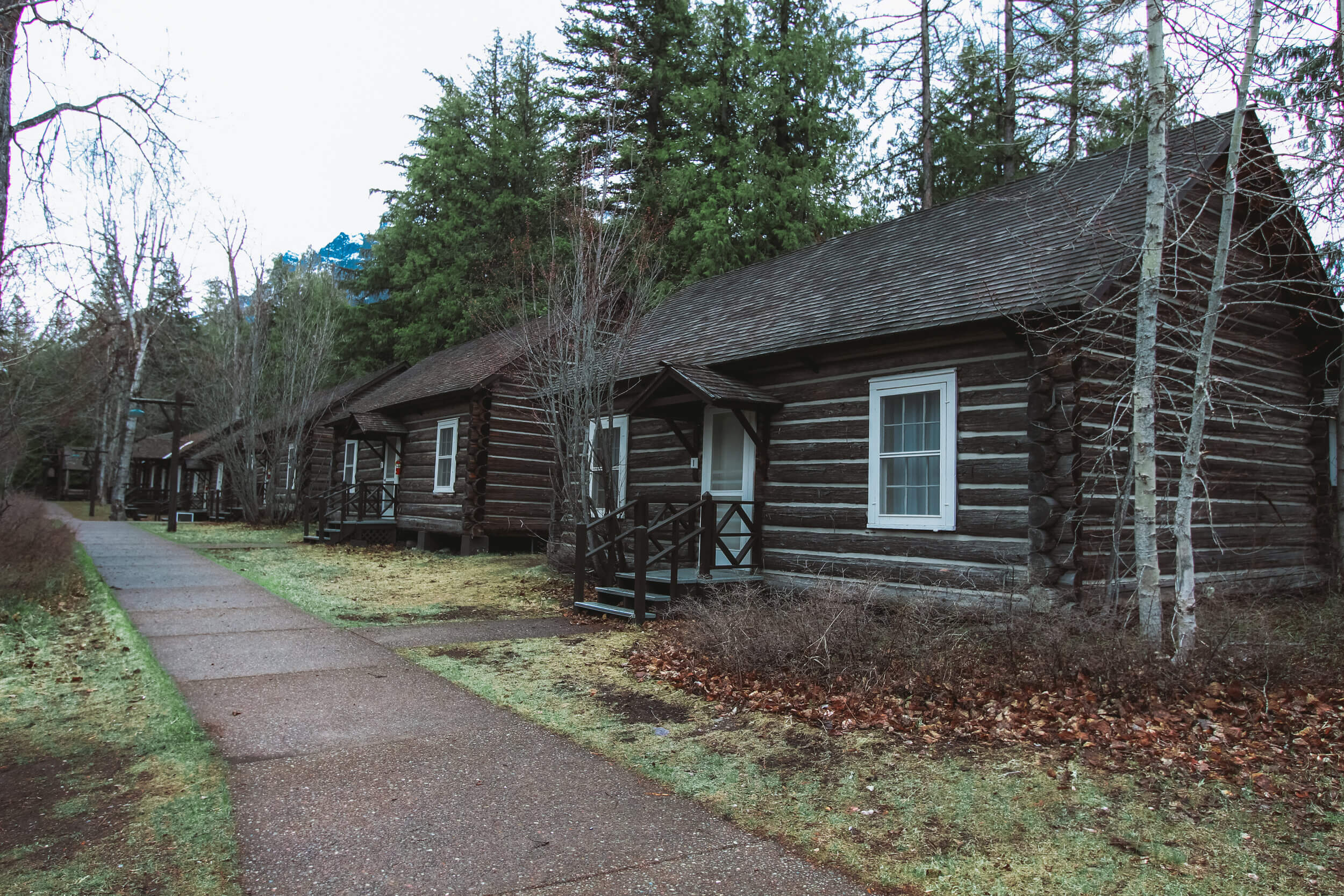

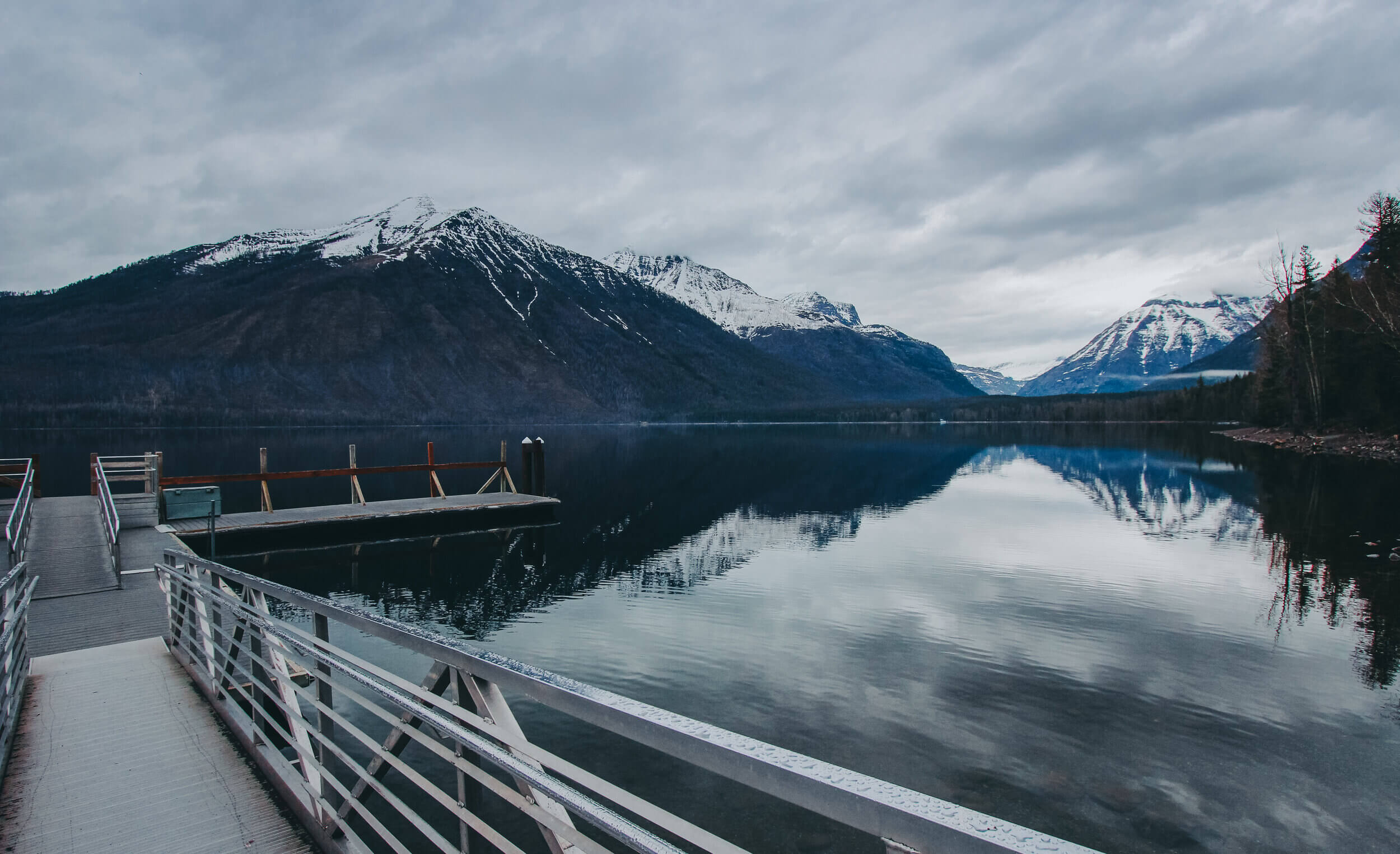


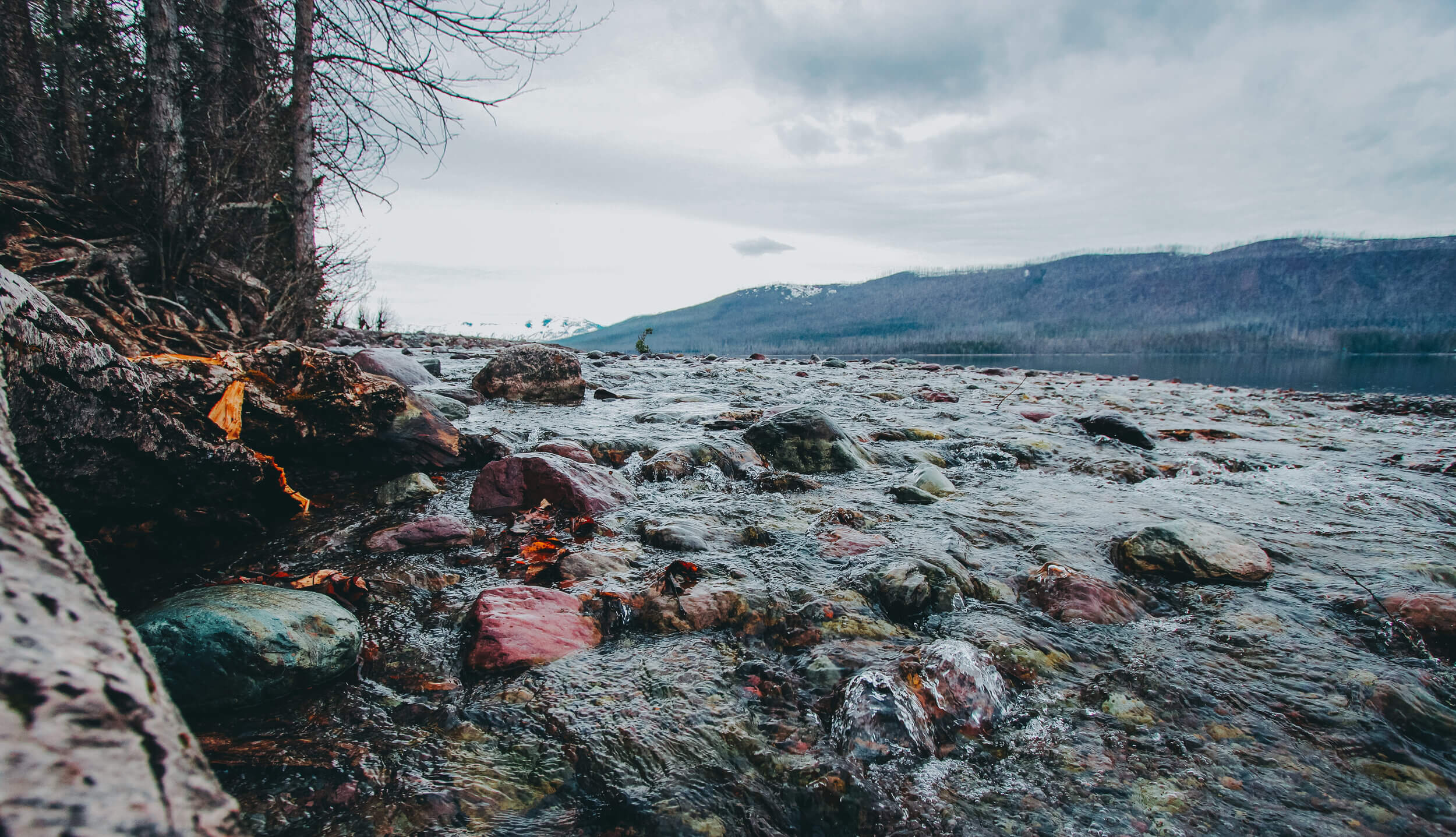

HUCKLEBERRY MOUNTAIN FOREST AND FIRE TRAIL
Although the signage inside of the park refers to the trail’s original name “Huckleberry Mountain Nature Trail” it is also known as the “Forest and Fire Trail.” On the AllTrails app and website, the trail is referred to as the “Huckleberry Mountain Forest and Fire Trail,” but all of these names refer to the same trail. Located near the Camas Creek Entrance to the park, this trail is moderate and for all age levels, and is best used in the park from April to October. It is suggested that once you reach the loop portion of the trail, you should turn left and hike the loop in a clockwise direction.
in 1967, this area of the park was severely burned and burned again in 2001 during the Moose Fire. The Forest and Fire Trail takes hikers through the rebirth of a brand-new forest, especially in the early portions of the hike. As the trail proceeds, you will see thousands of dead trees that are the aftermath of the fires. As the forest continues to grow, it will attract wildflowers that will grace the forest floors and border the trail- a beautiful sight in the warmer summer months!
Length: 1.0 mi | Elevation gain: 114 ft | Route type: Loop

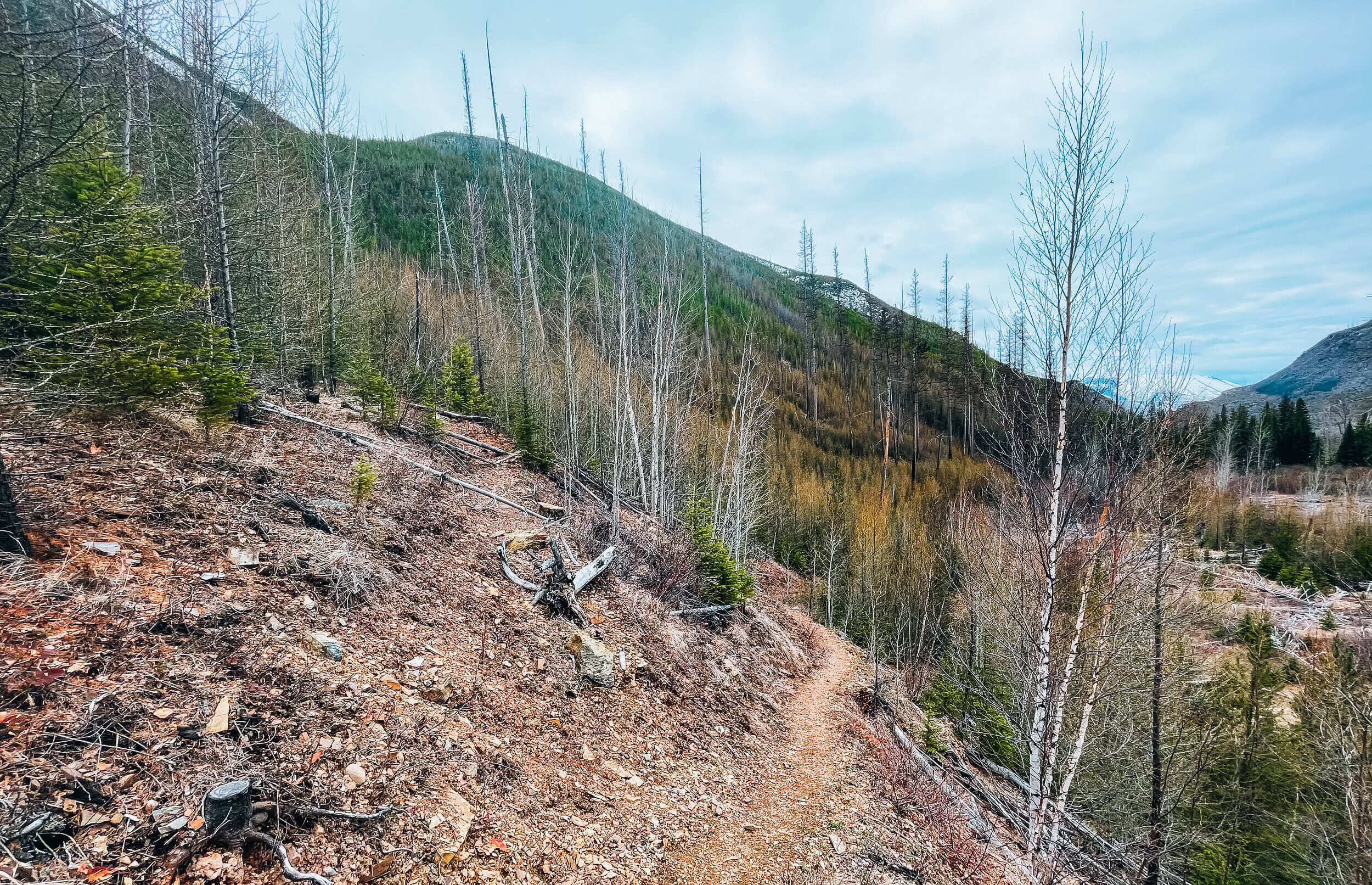


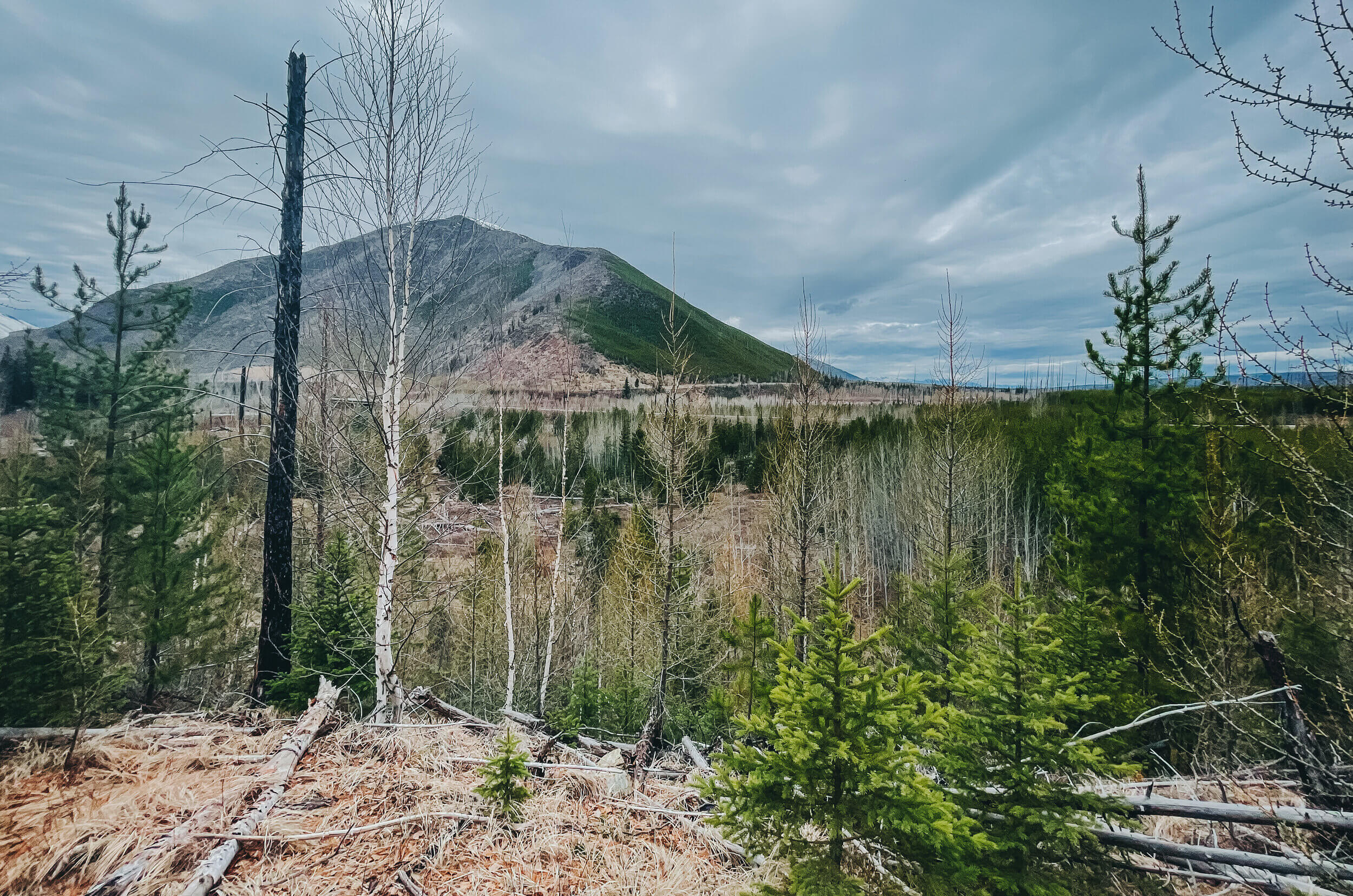
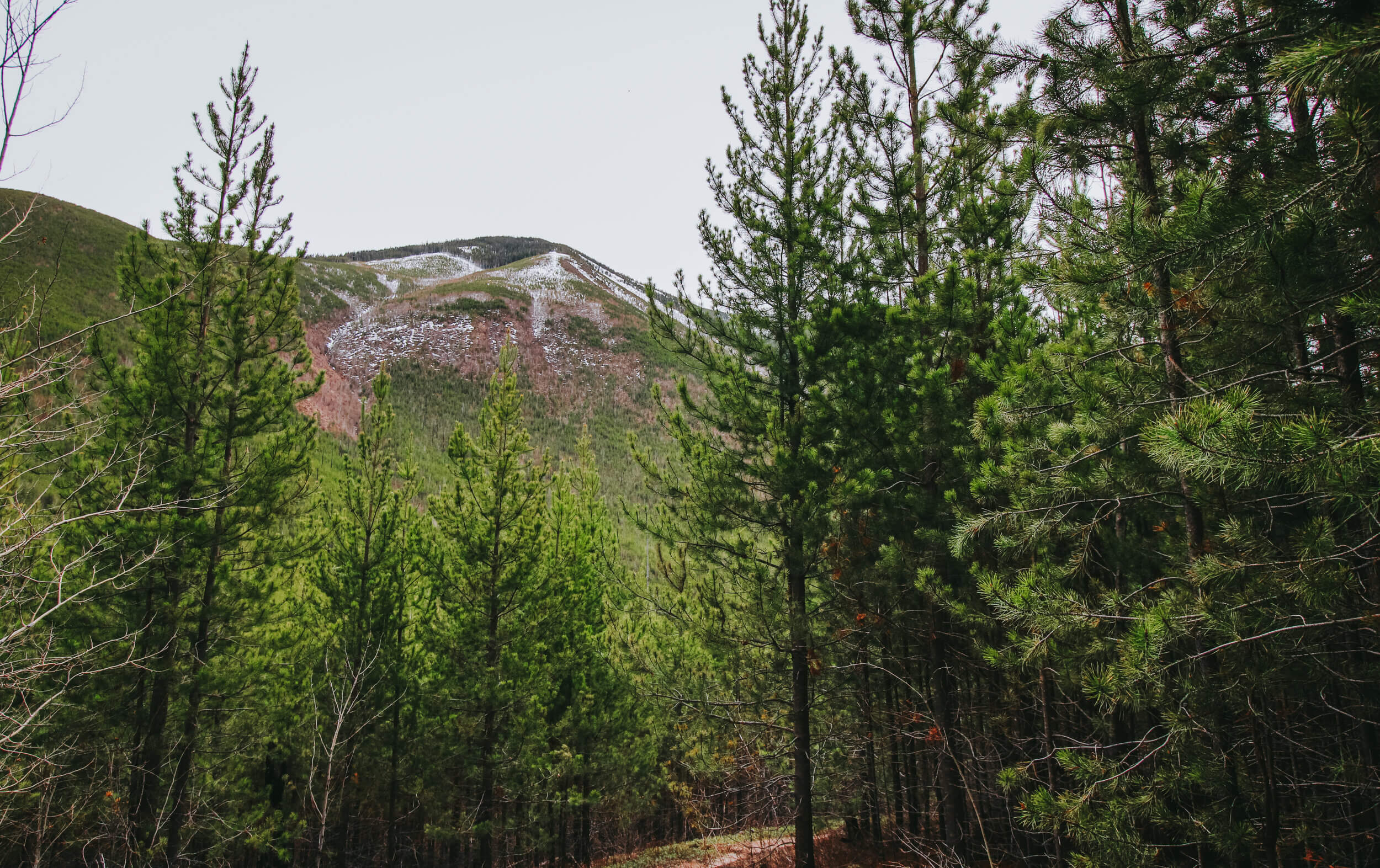
FLATHEAD LAKE
If you are staying closer to the Kalispell area, Flathead Lake would be a well-worth addition to your time in Montana! Only 15 minutes from Kalispell, this lake is the largest natural lake in northwest Montana and the largest natural freshwater lake by surface area that is west of the source of the Mississippi River in the contiguous United States. The drive around the lake takes around 2 hours and the road leads you through small towns that border the lake. During our visit, it was a crisp, sunny day and the waters were bright blue and turquoise- very reminiscent of the waters of Lake Tahoe!
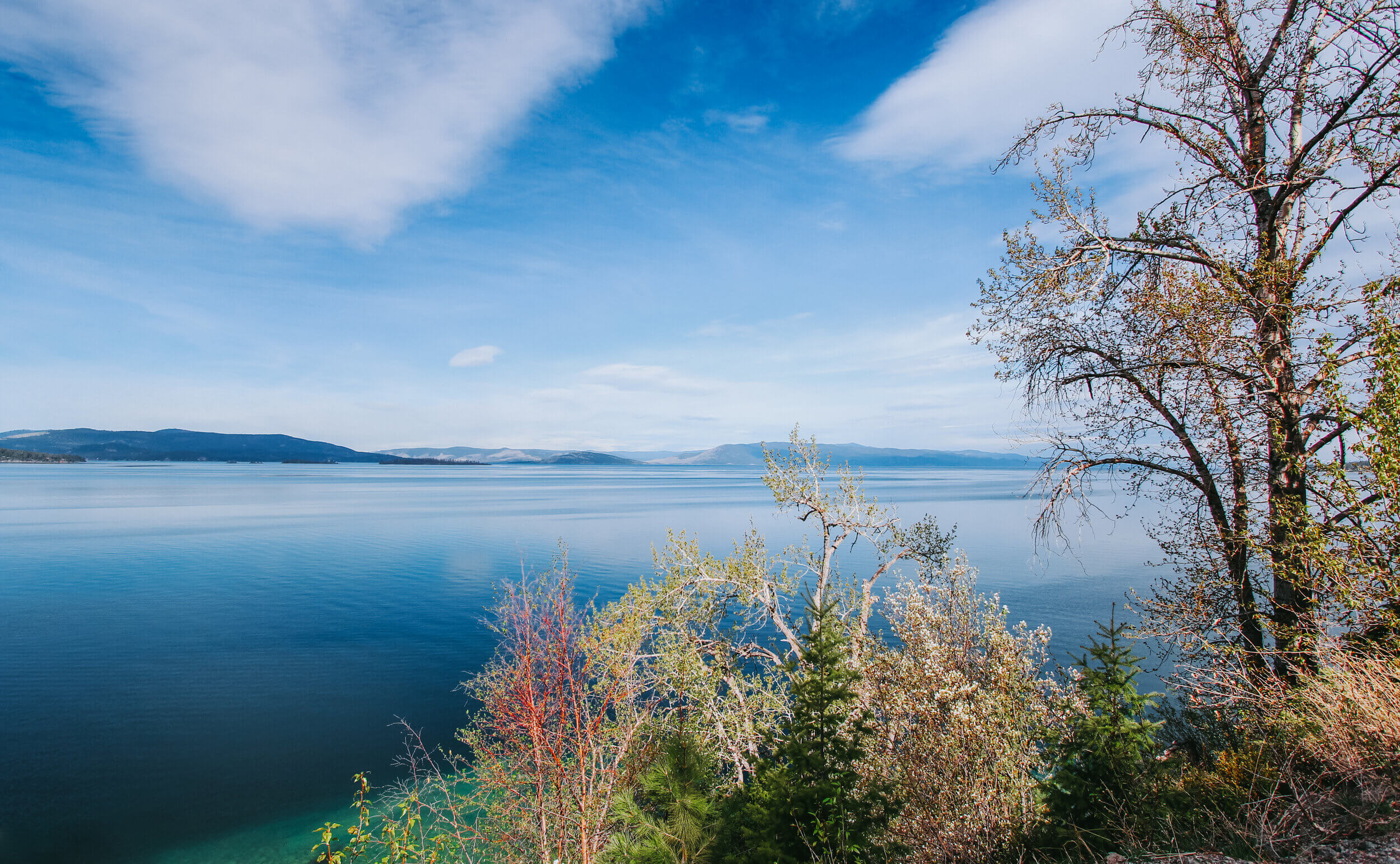
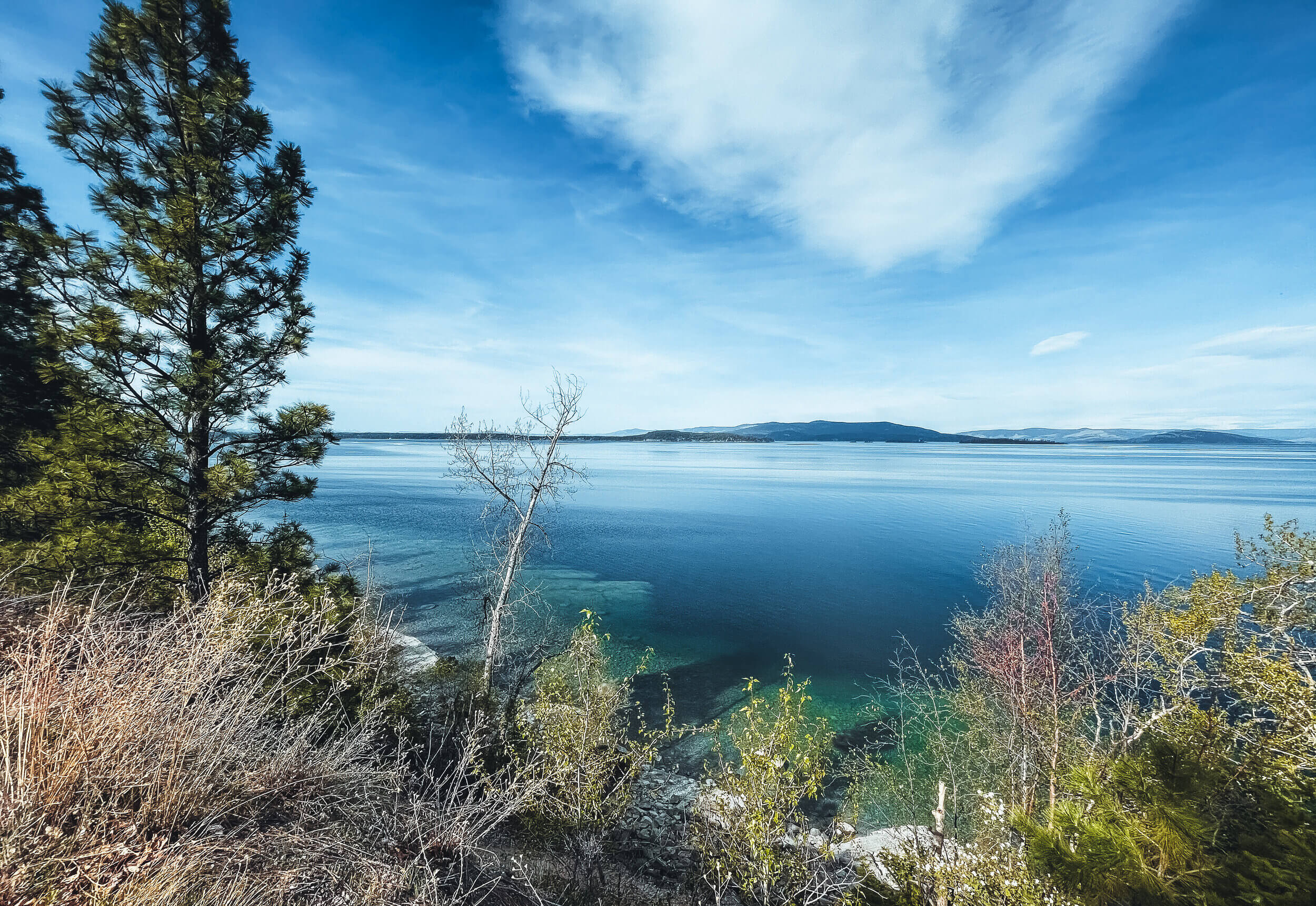

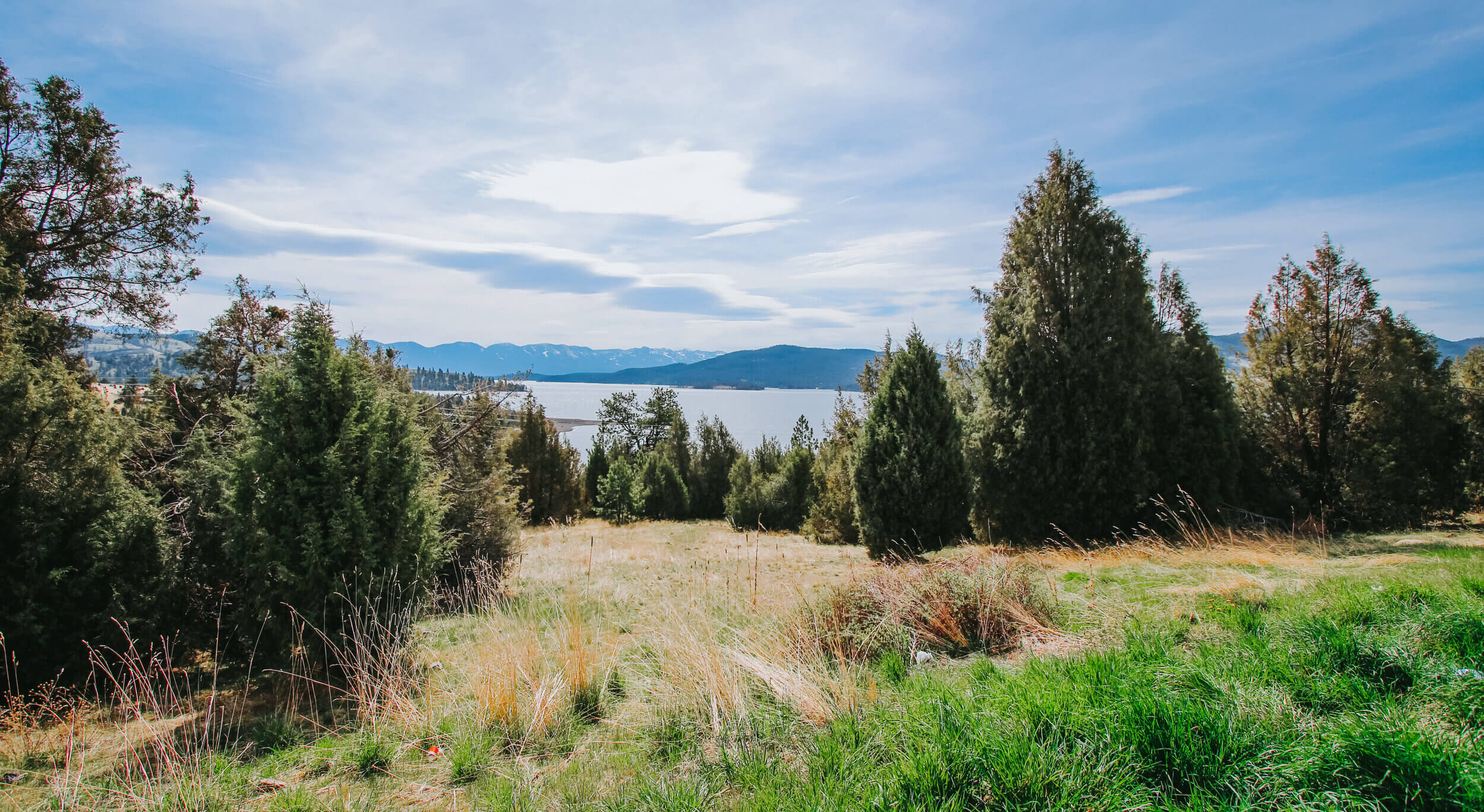
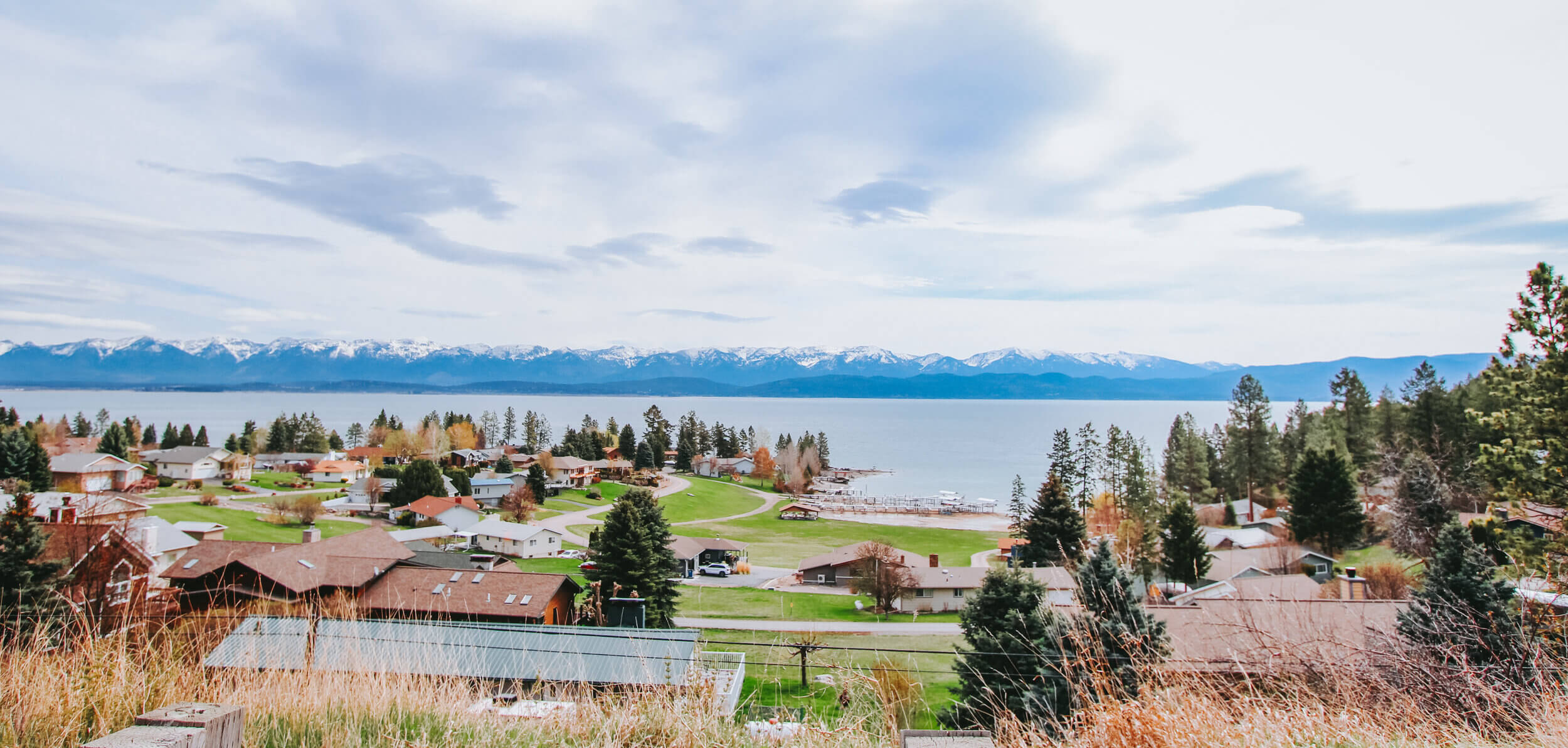
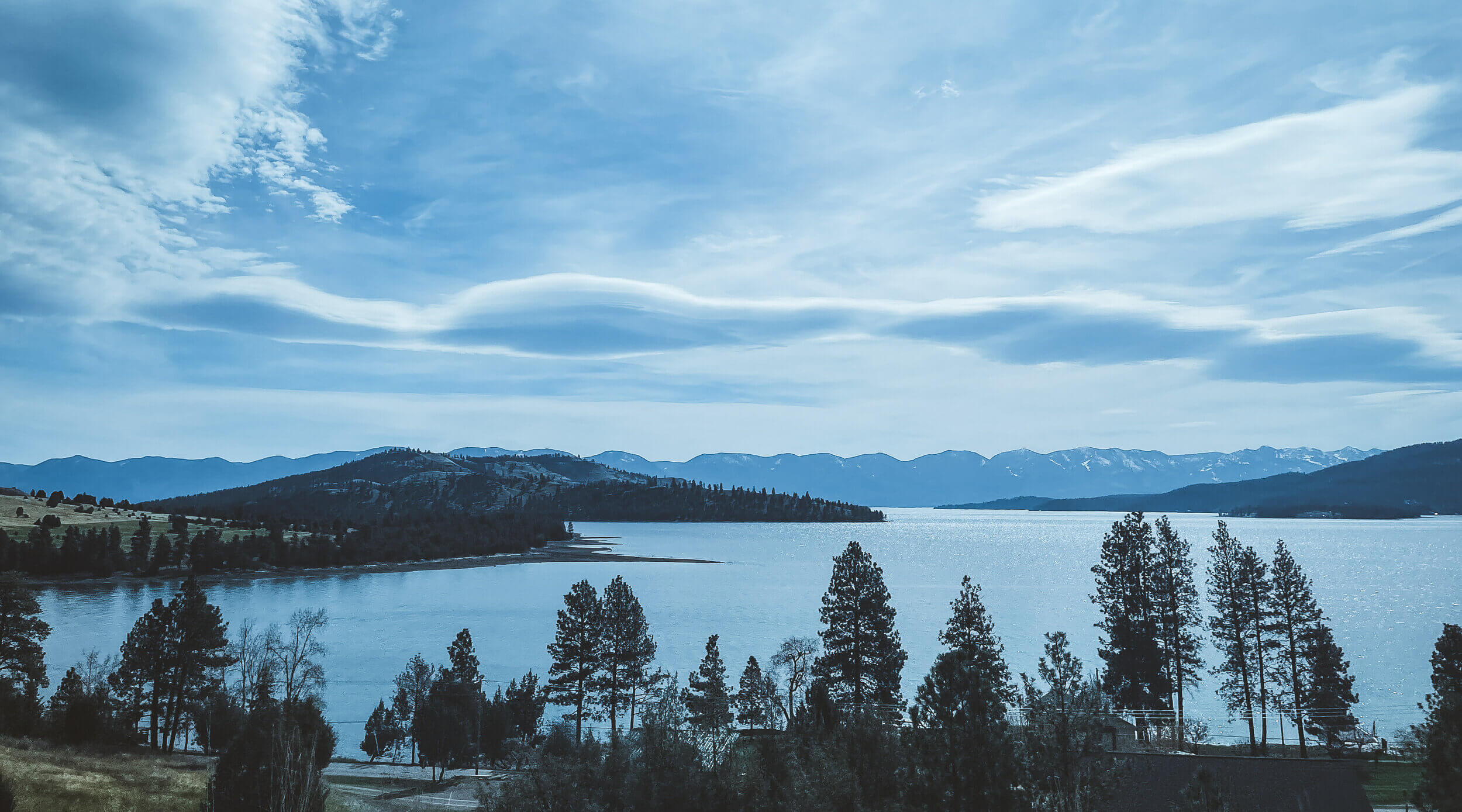
WHERE TO DINE & LODGE WHILE IN THE GLACIER NATIONAL PARK AREA
- Lodging: During our visit to Glacier National Park, we lodged out of Kalispell, only 33 miles from the West Entrance of the park. We stayed at the Springhill Suites by Marriott. This is a great option because Kalispell is one of the larger cities in the area, and this hotel is located near many restaurants and stores. REI is right across the street, within walking distance, in case you need some hiking or outdoor gear for your travels!
- After a day at Glacier National Park, we ate at Famous Dave’s Bar-B-Que right down the street from the Springhill Suites. `The food was great and the portions were very good for the price! It was so good, that we chose to eat here twice during our time in Kalispell!

Have you ever been to Glacier National Park? What are your favorite places to visit, stay, and eat?
Comment below!




Kathleen L Haskin RN
Thank you for this wealth of information to newcomers to the National Park. Very information and well written. ESPECIALLY LOVE the great pictures!